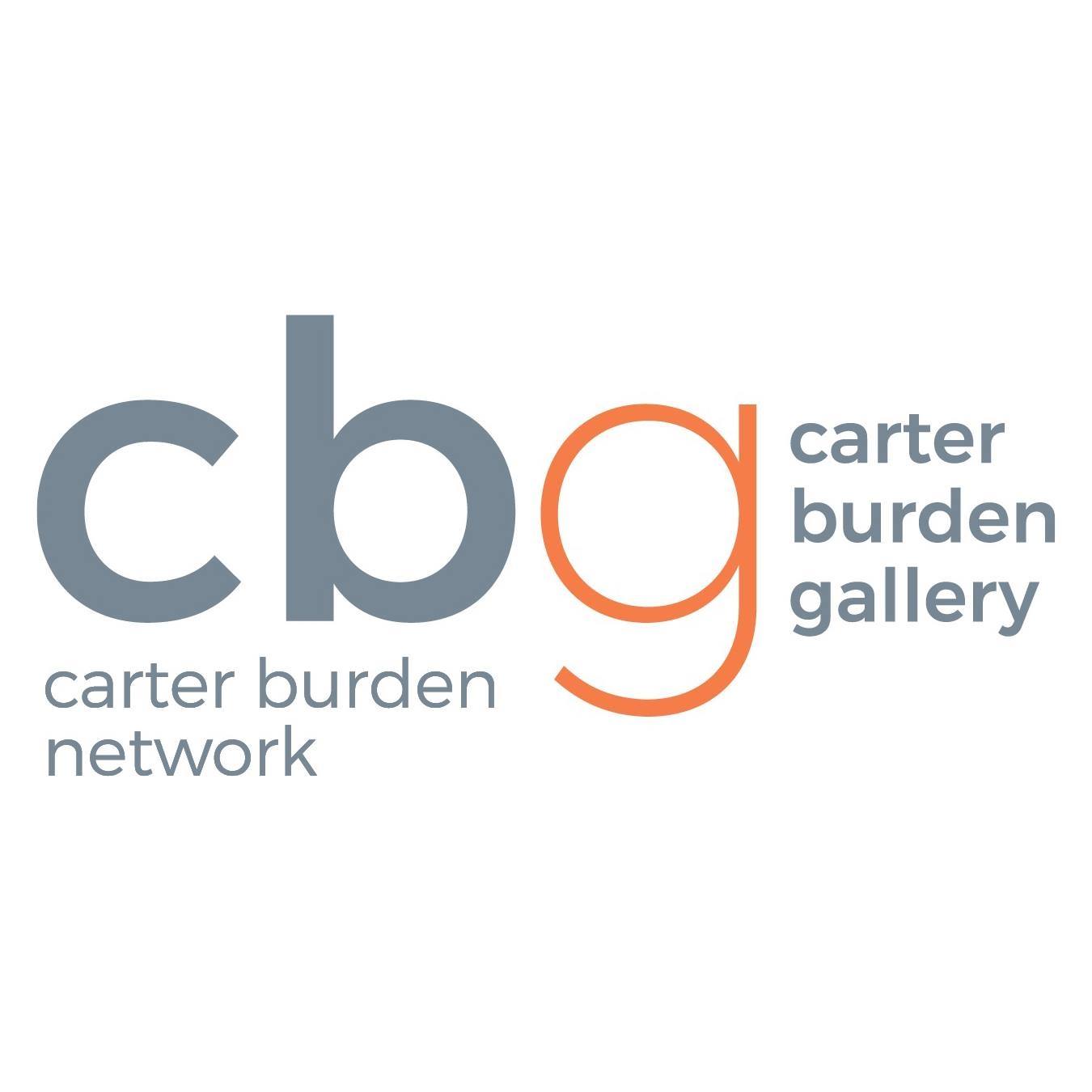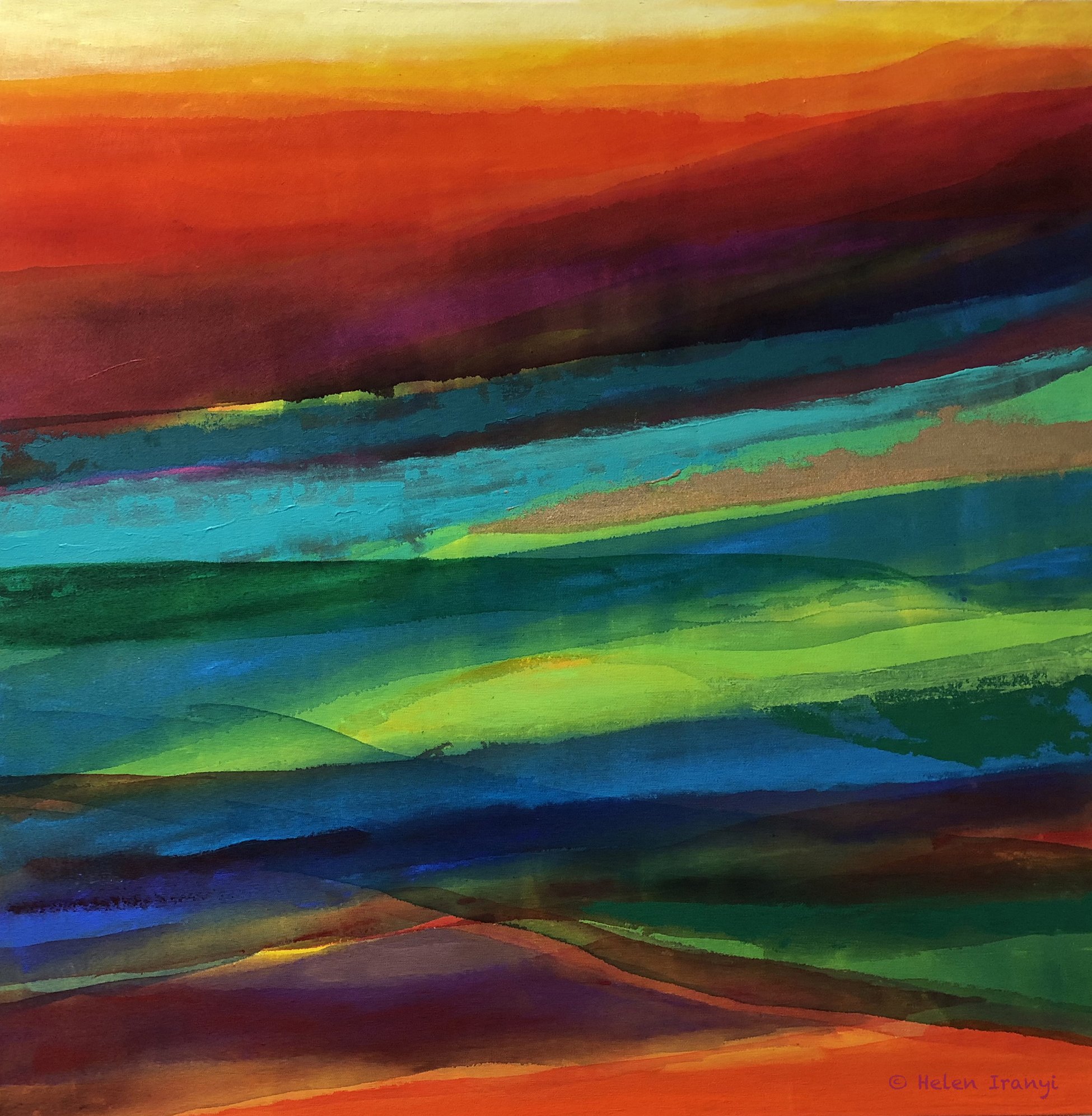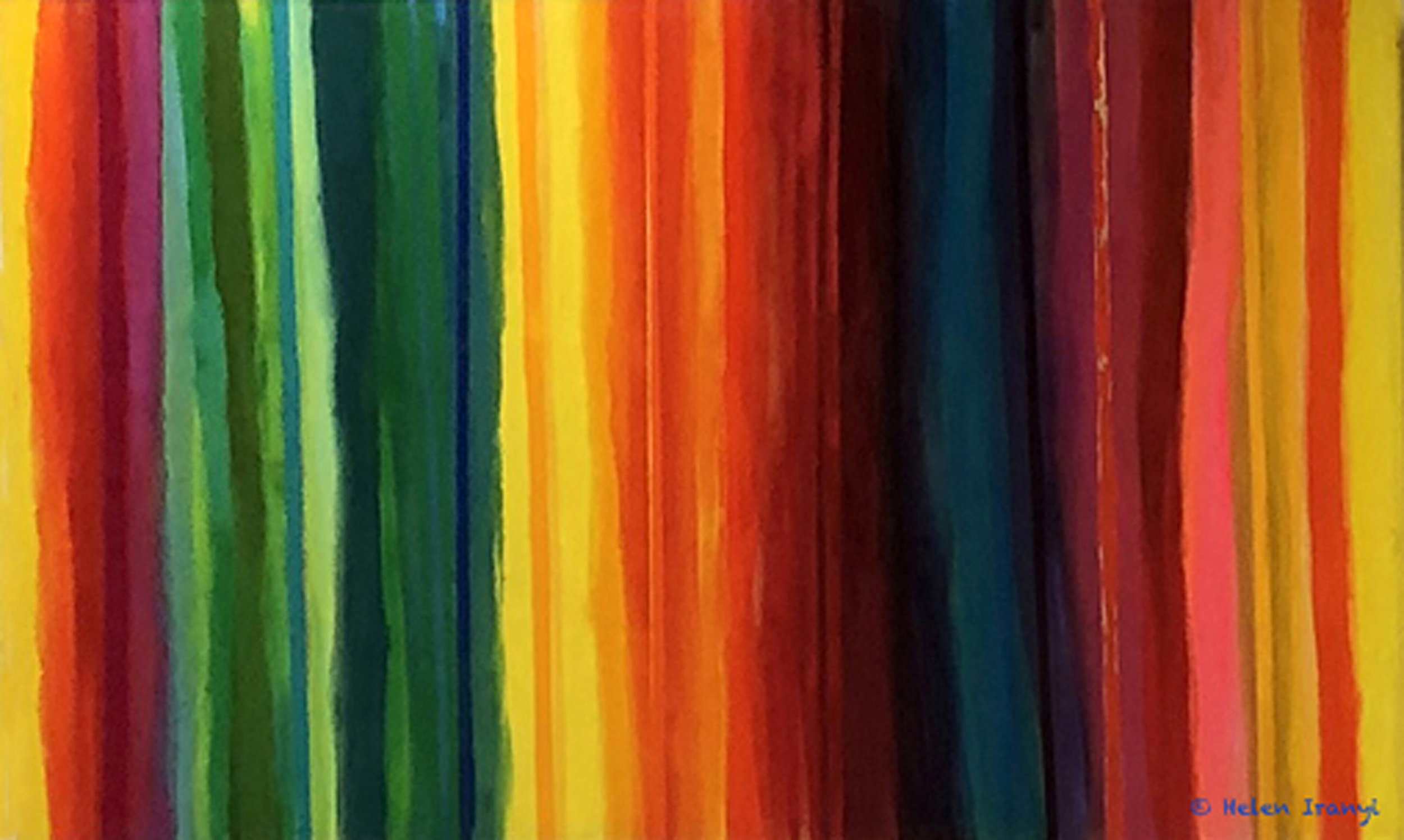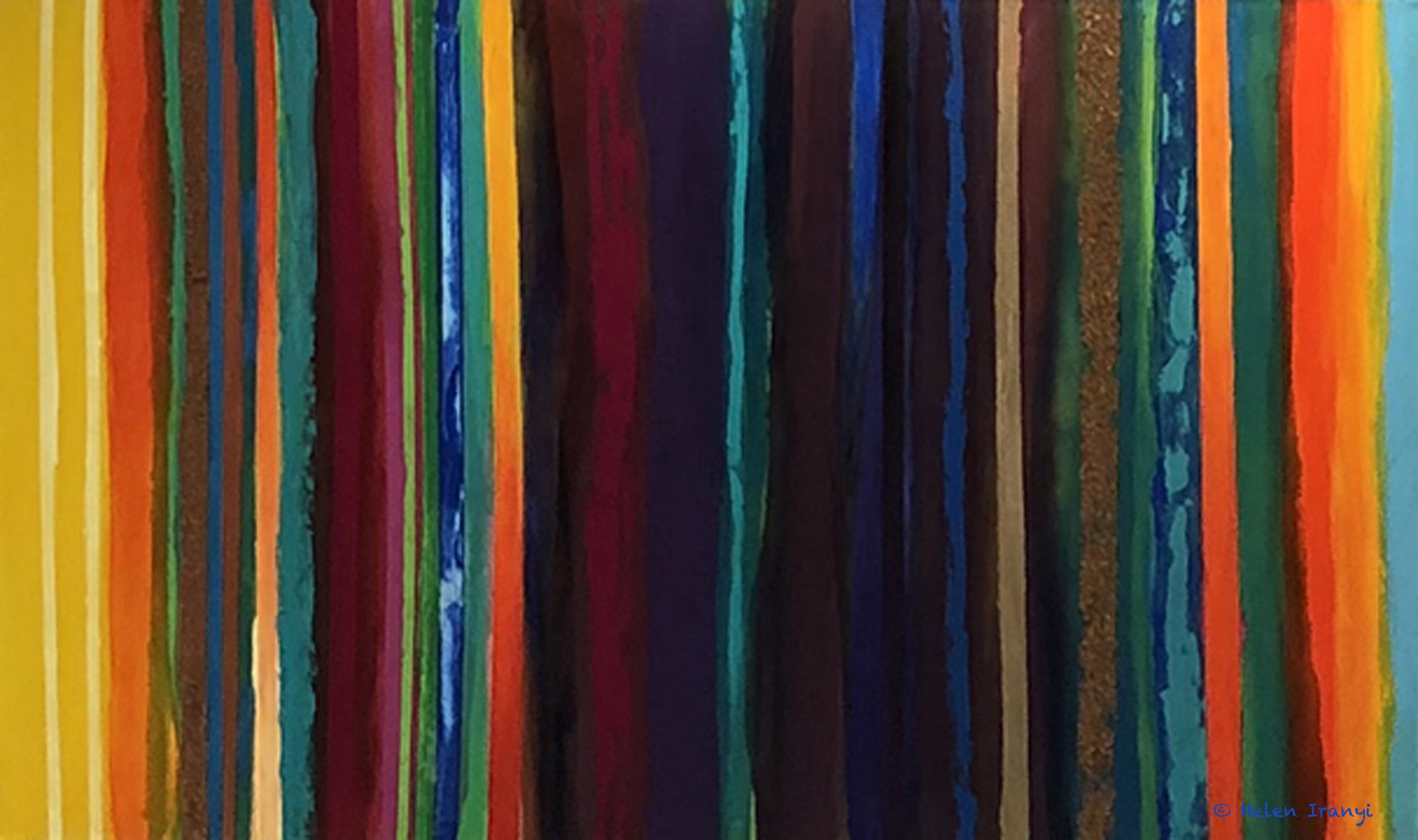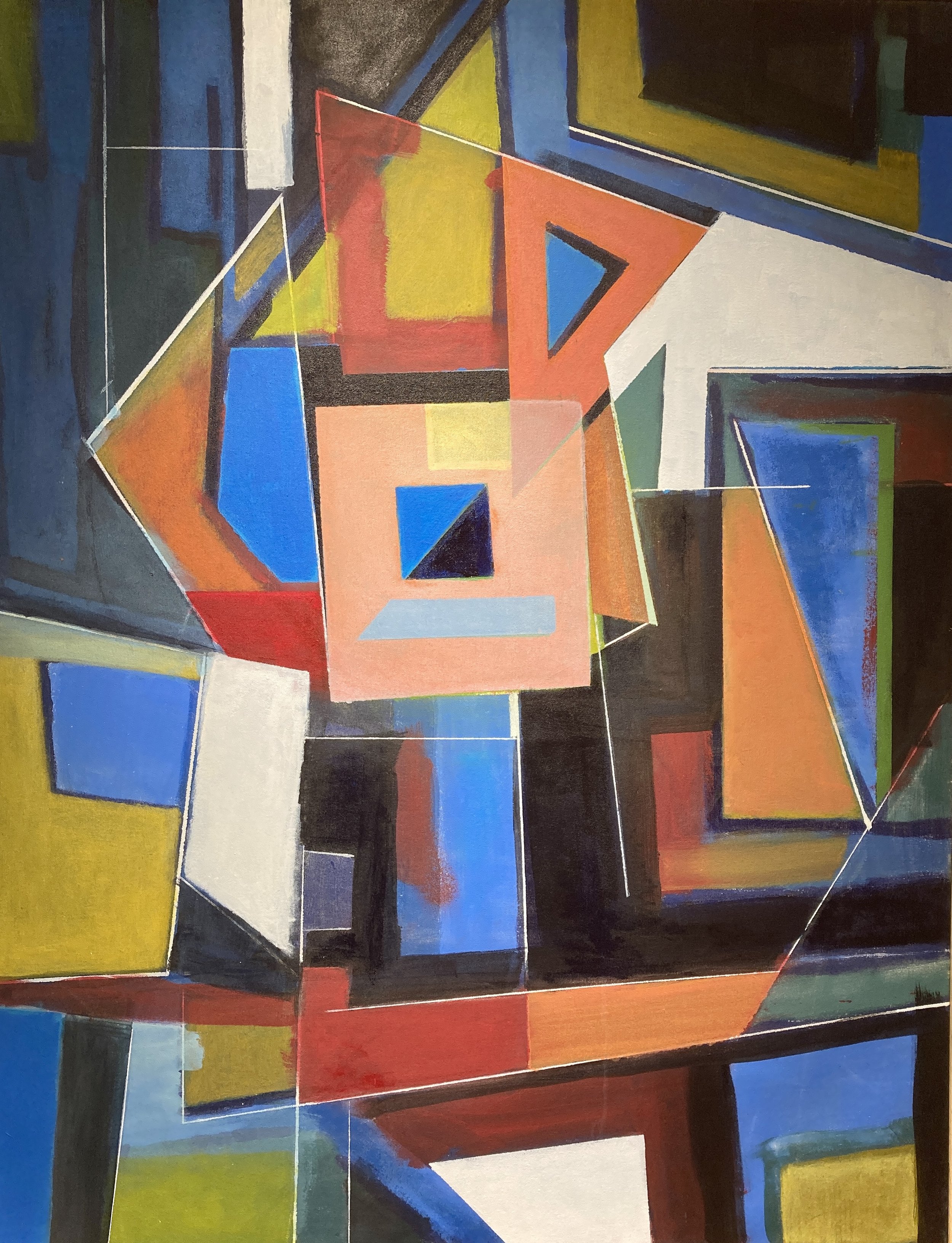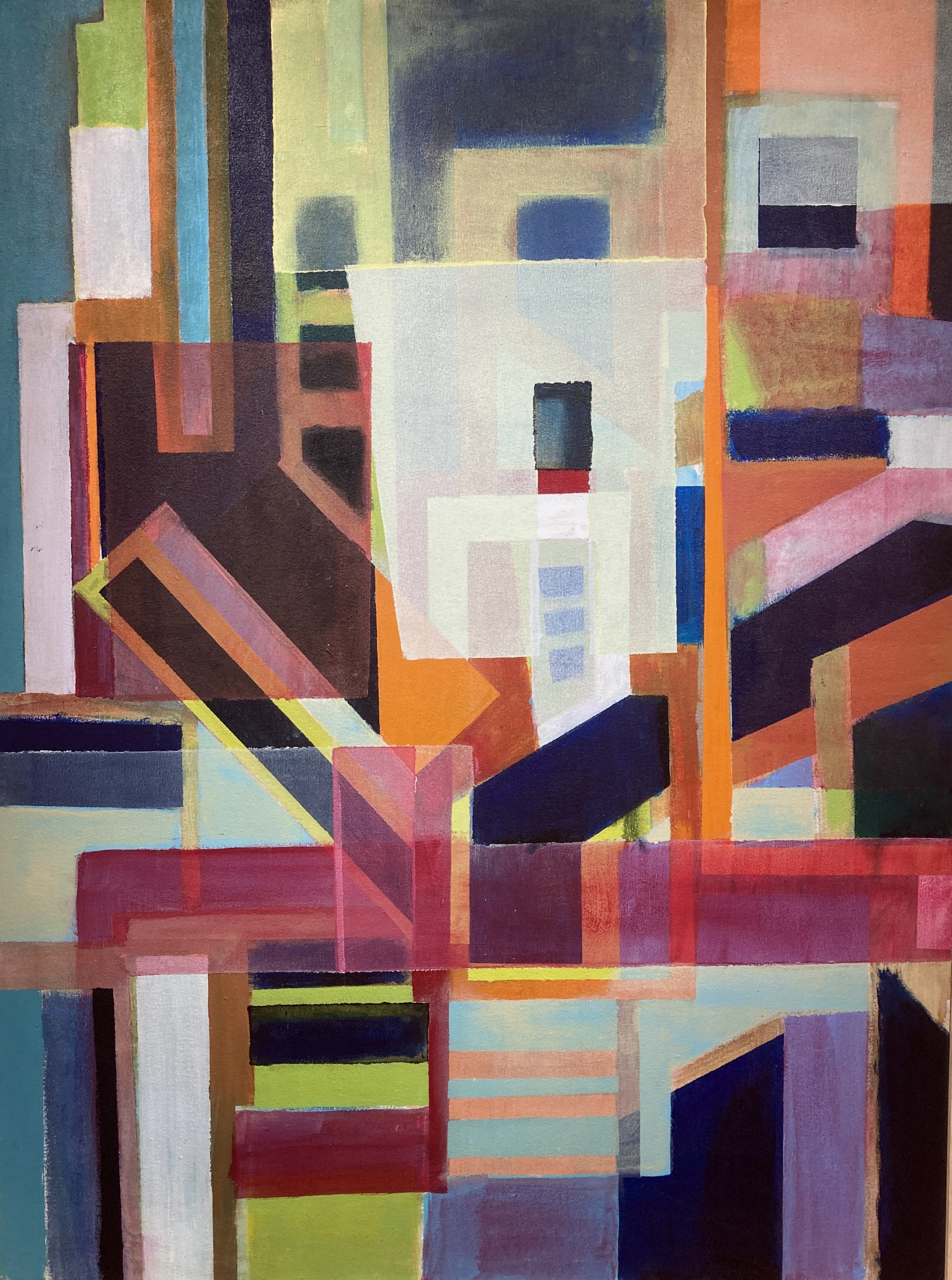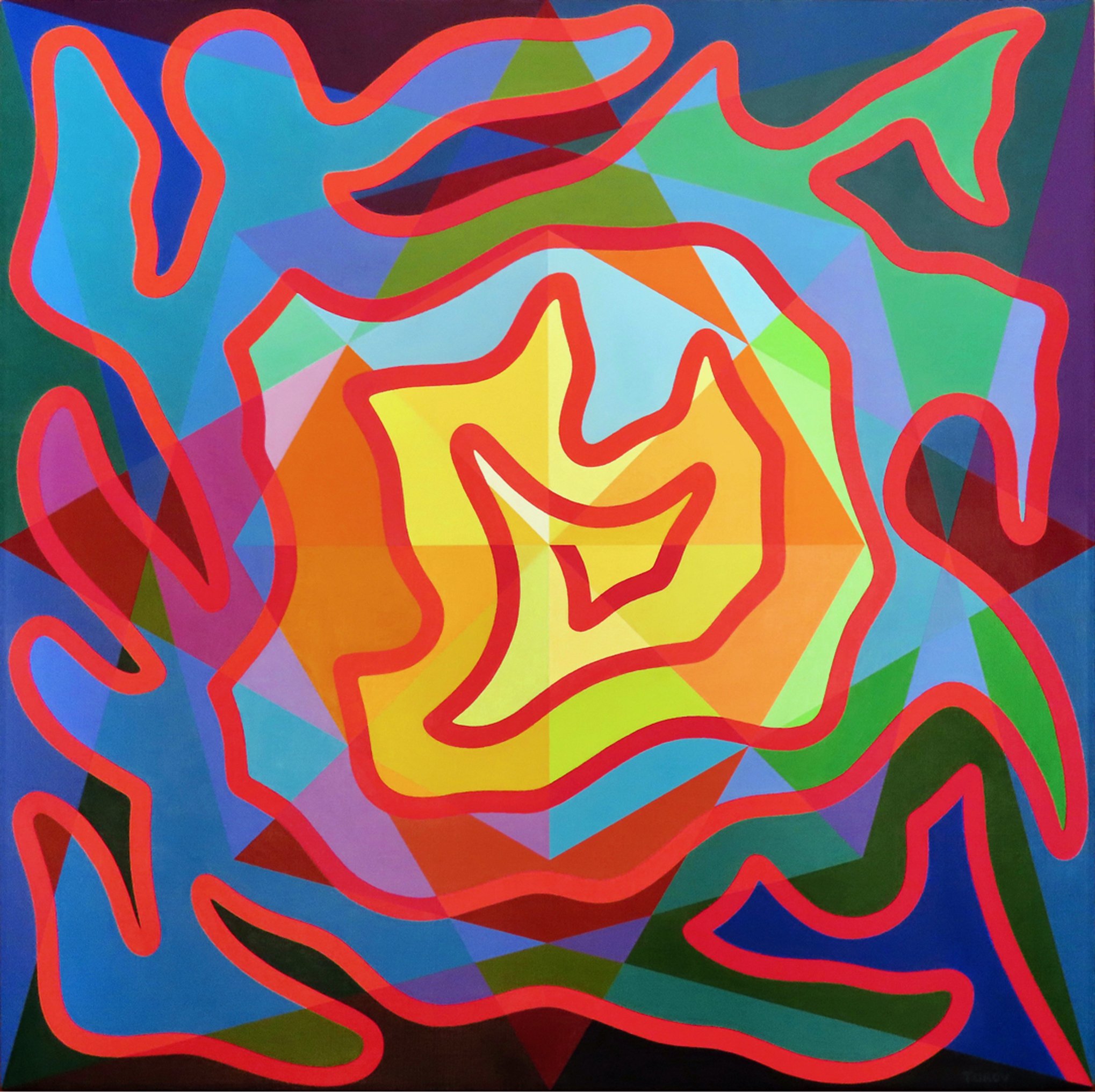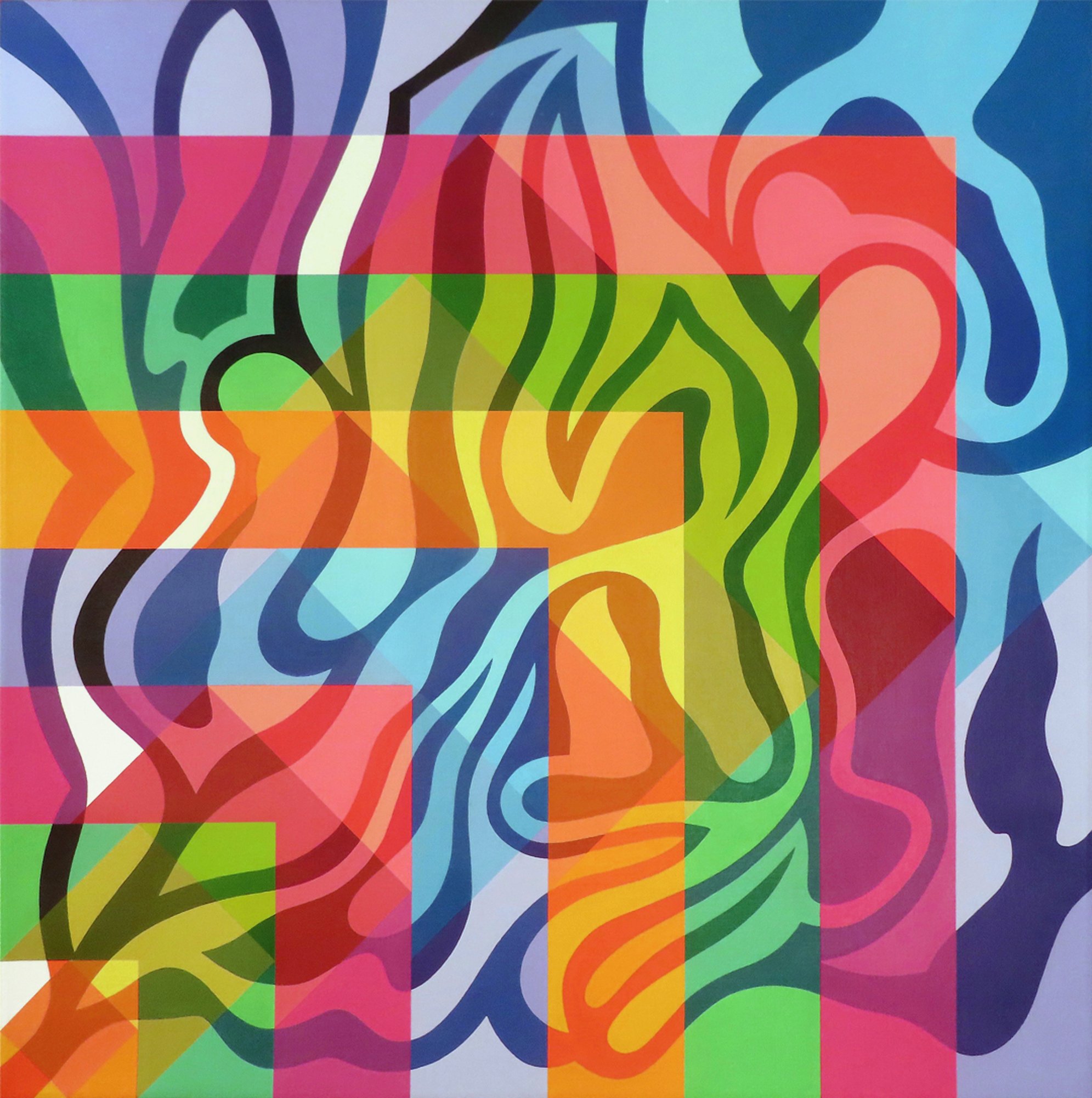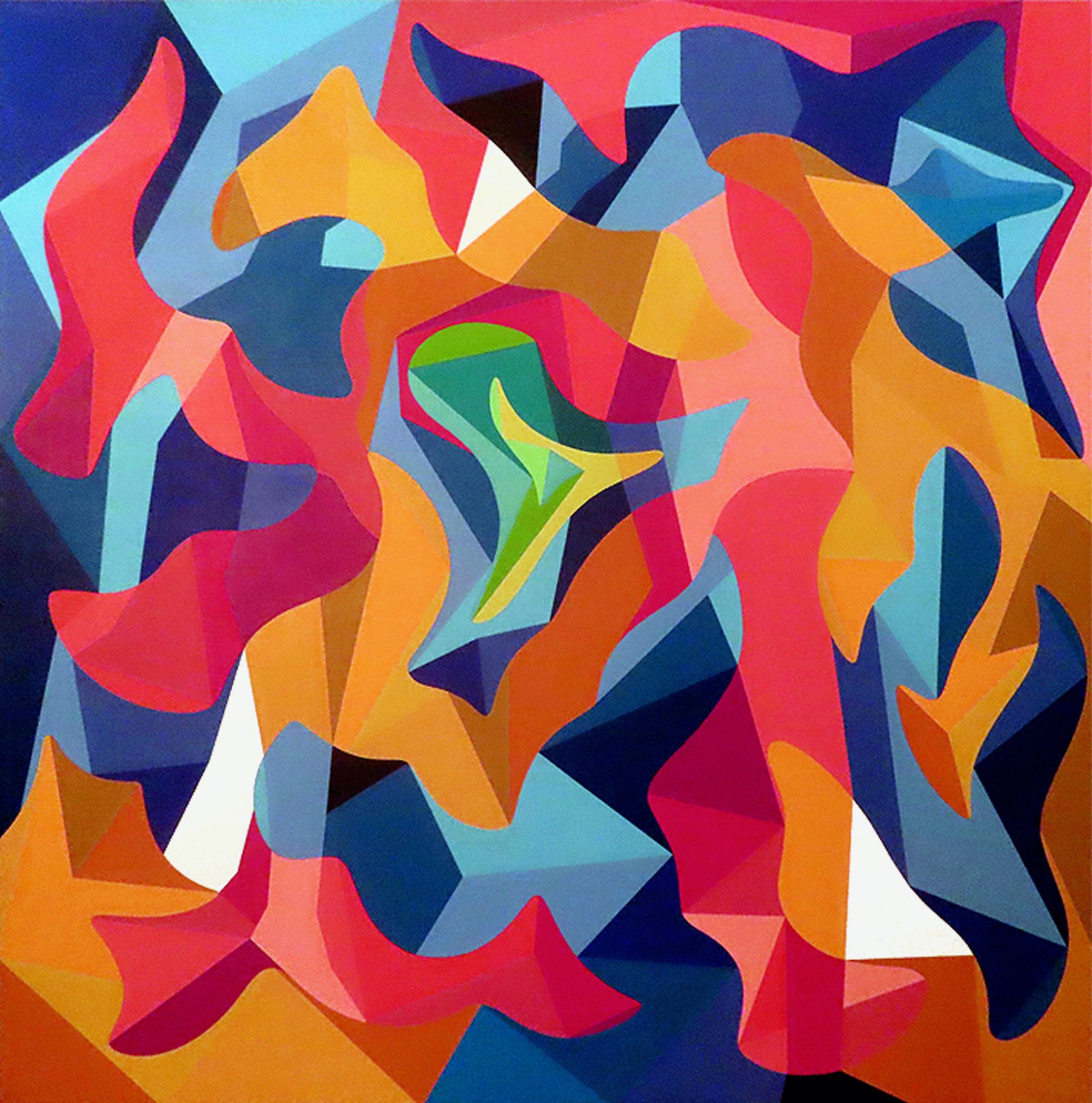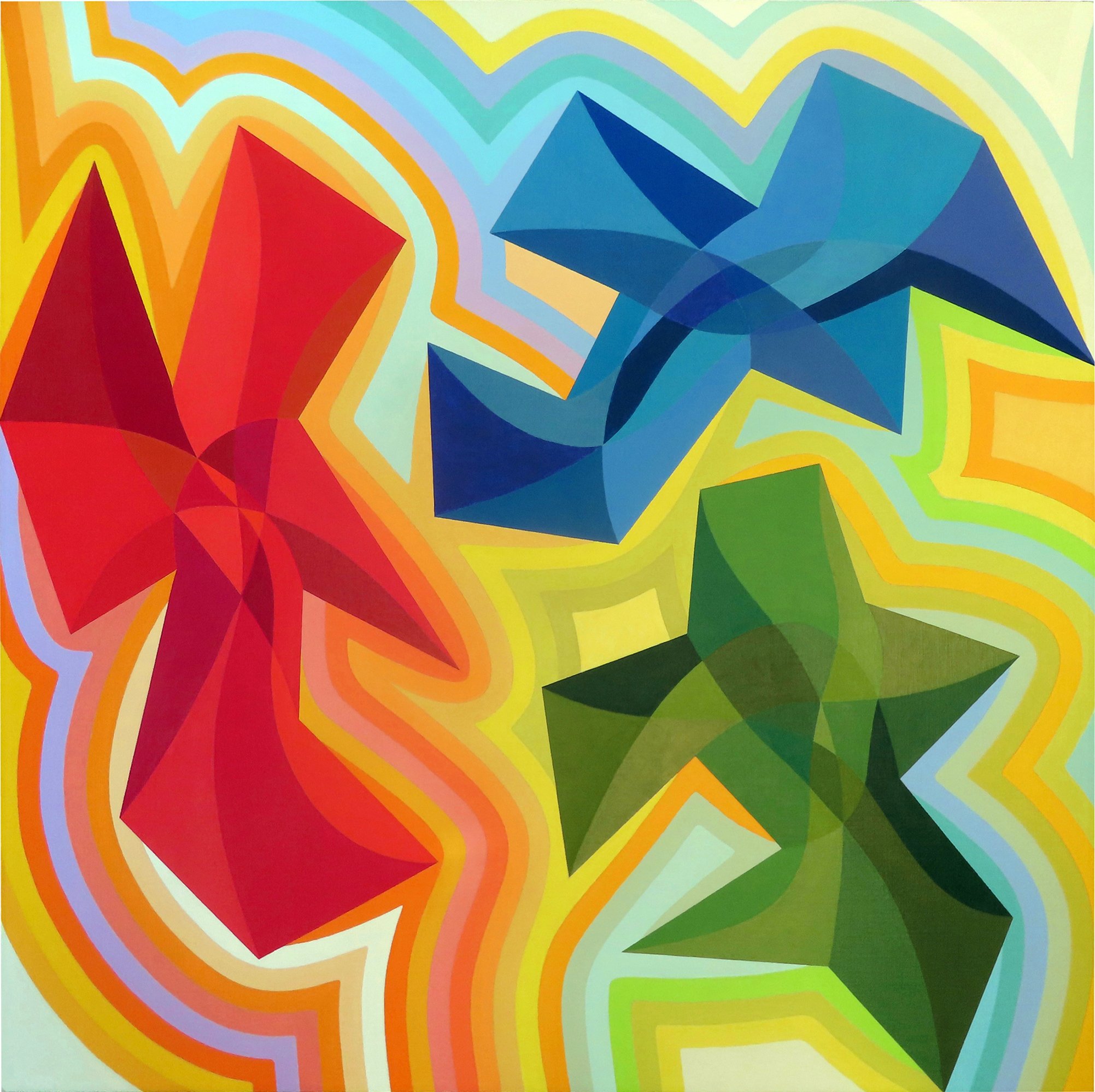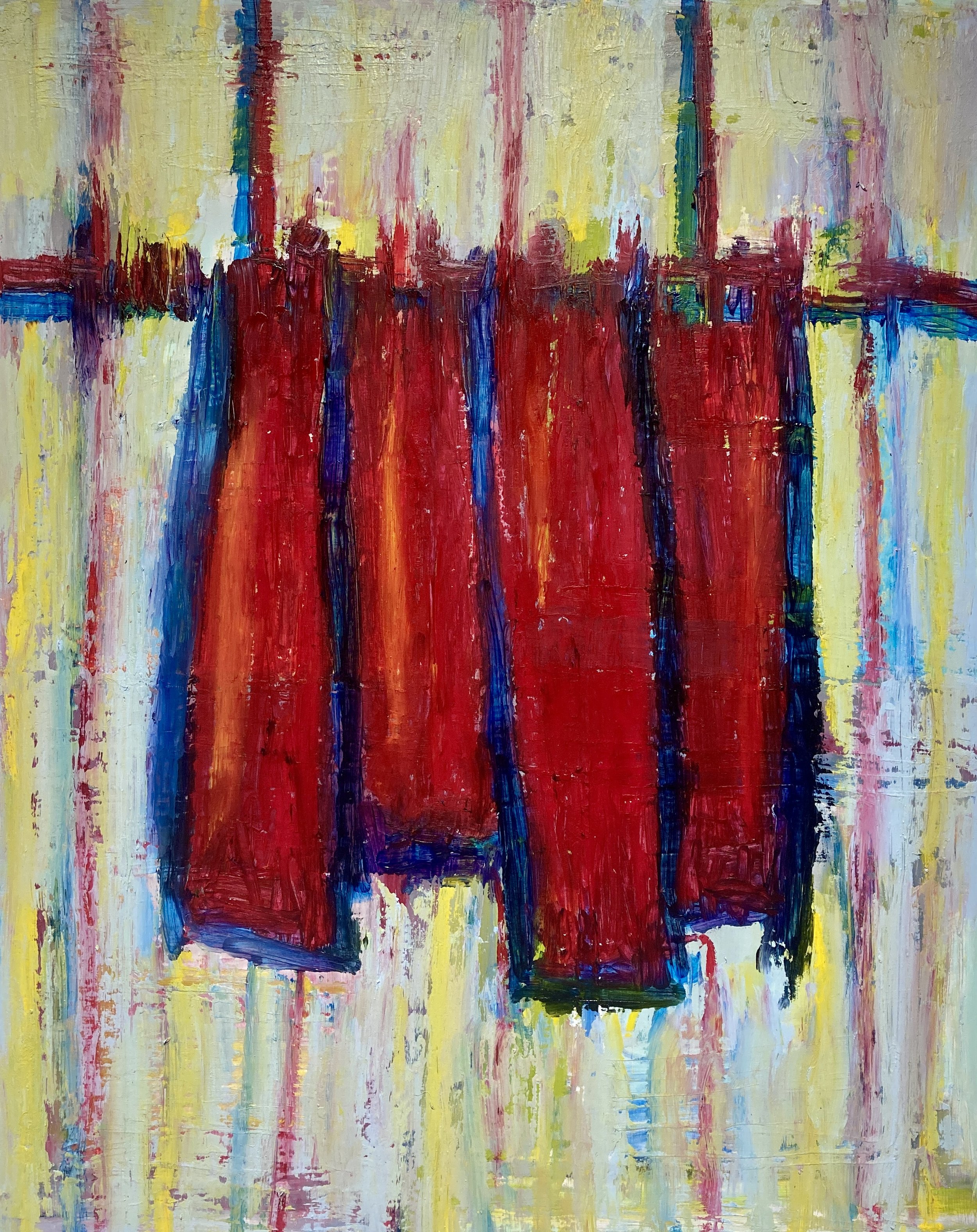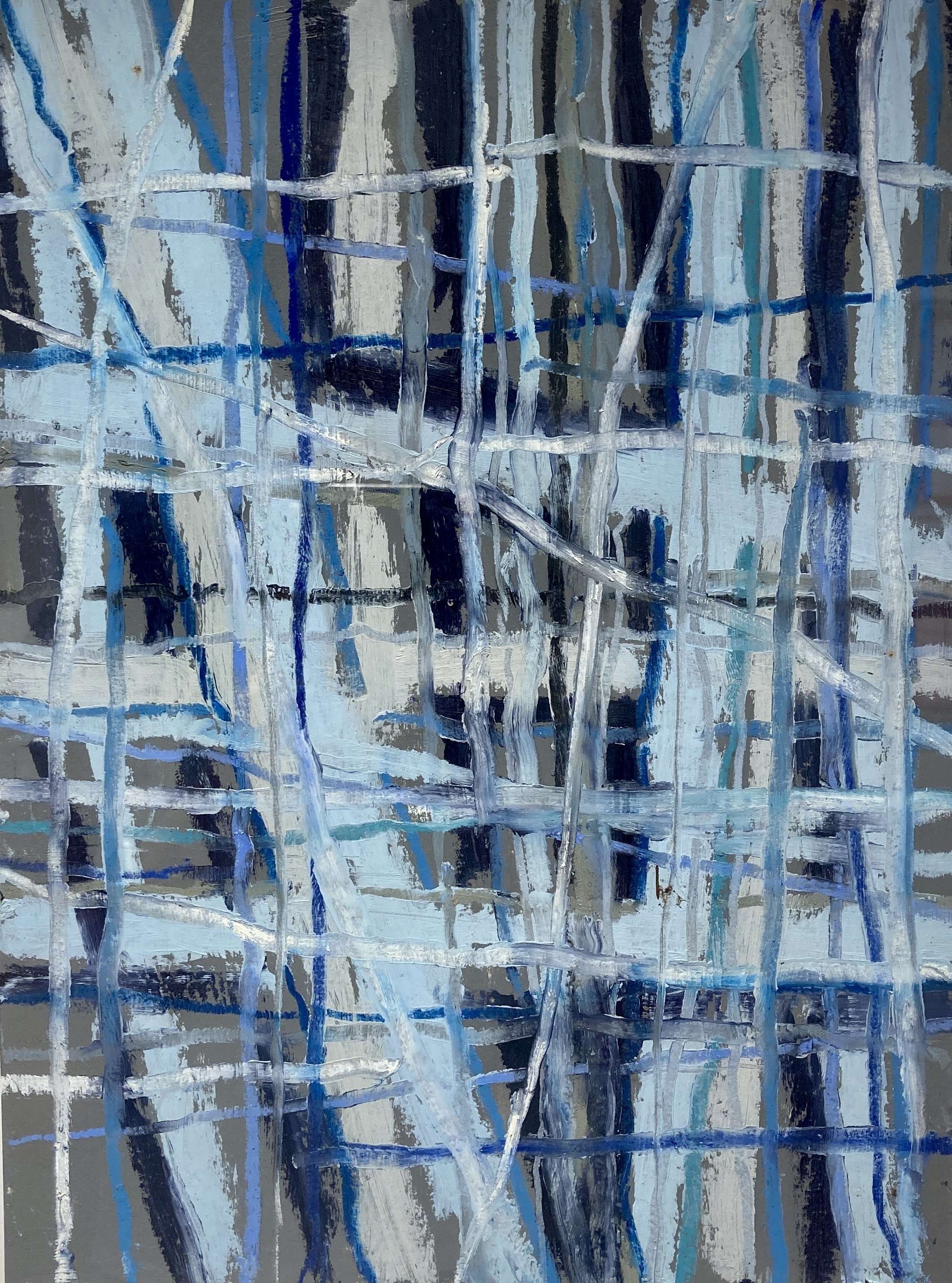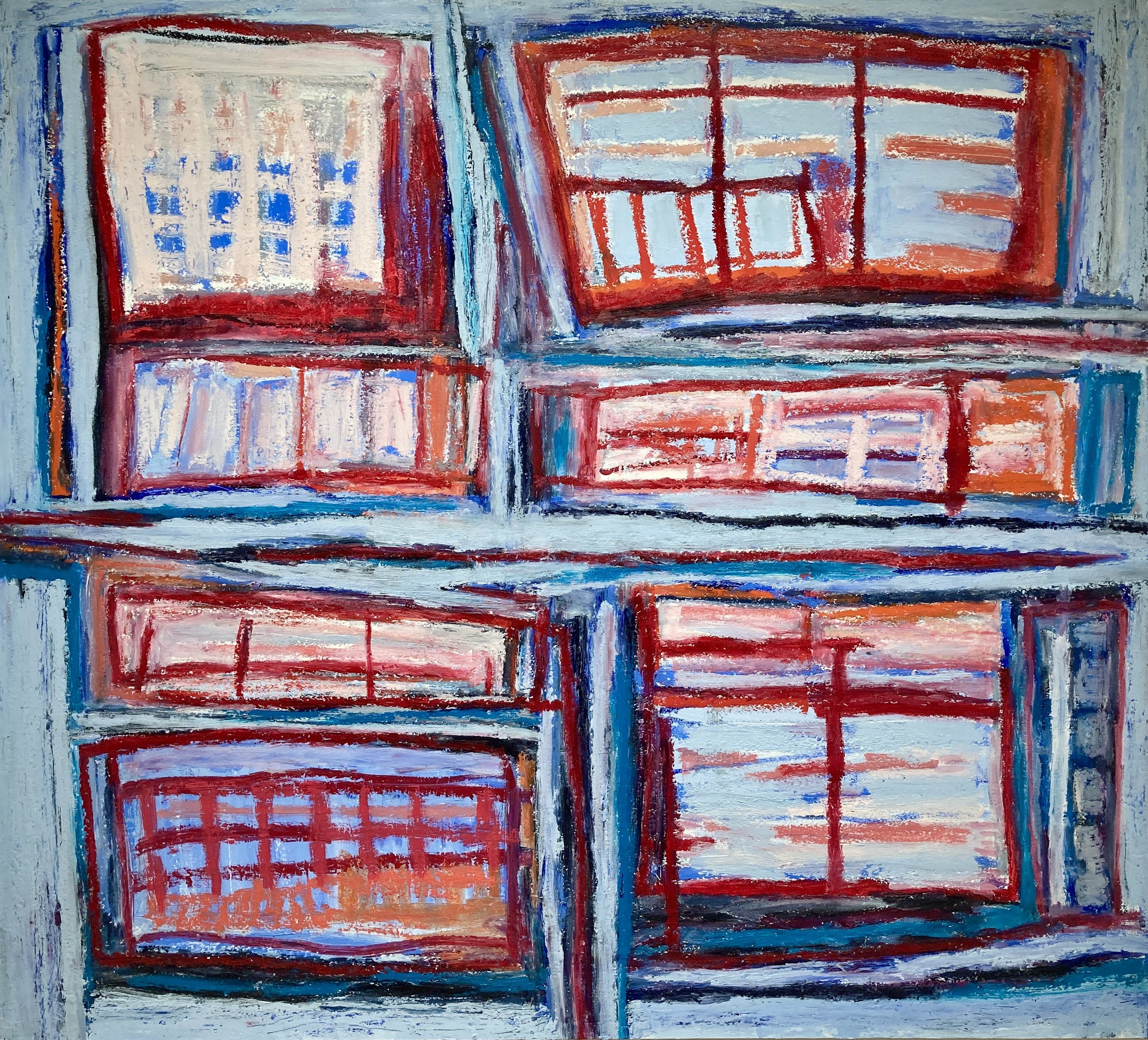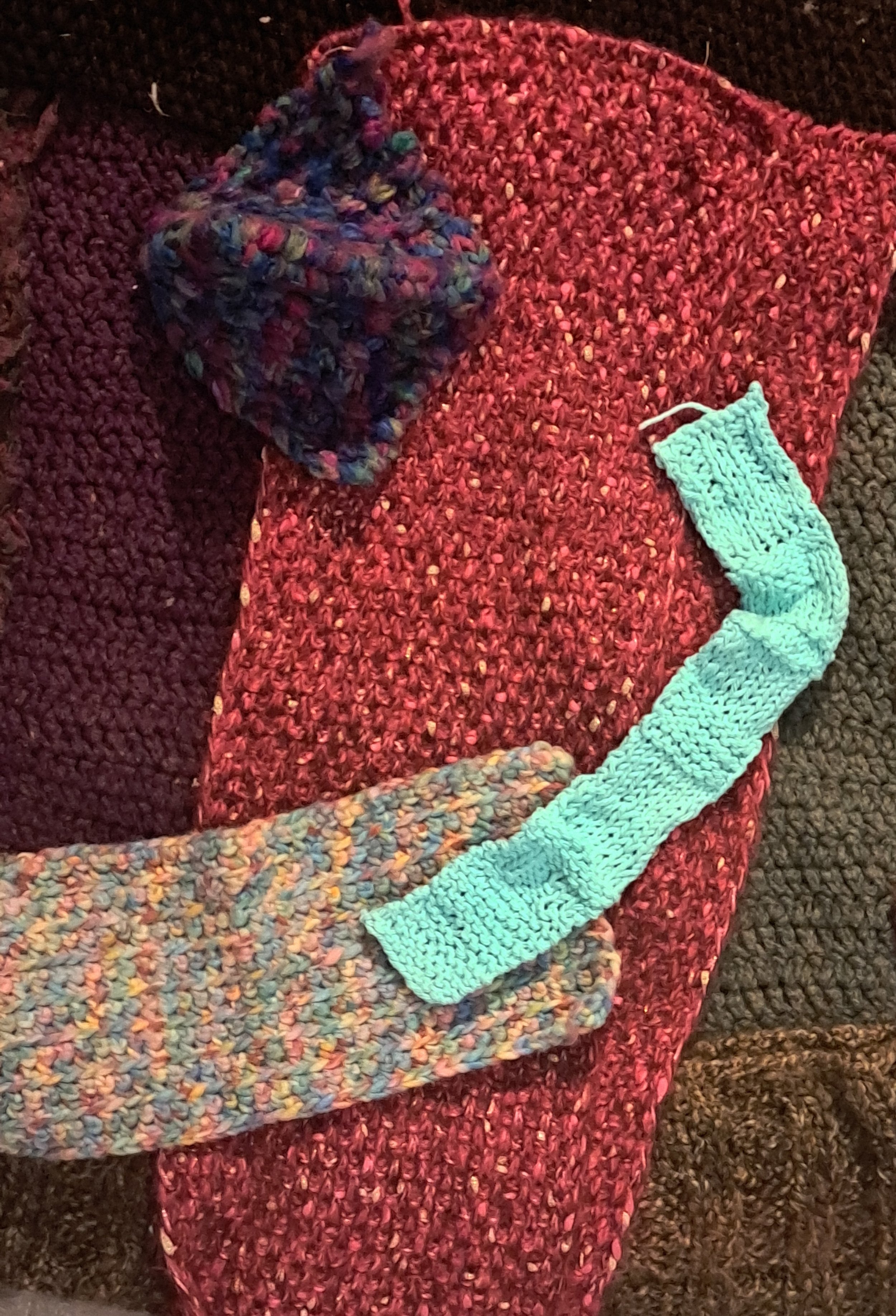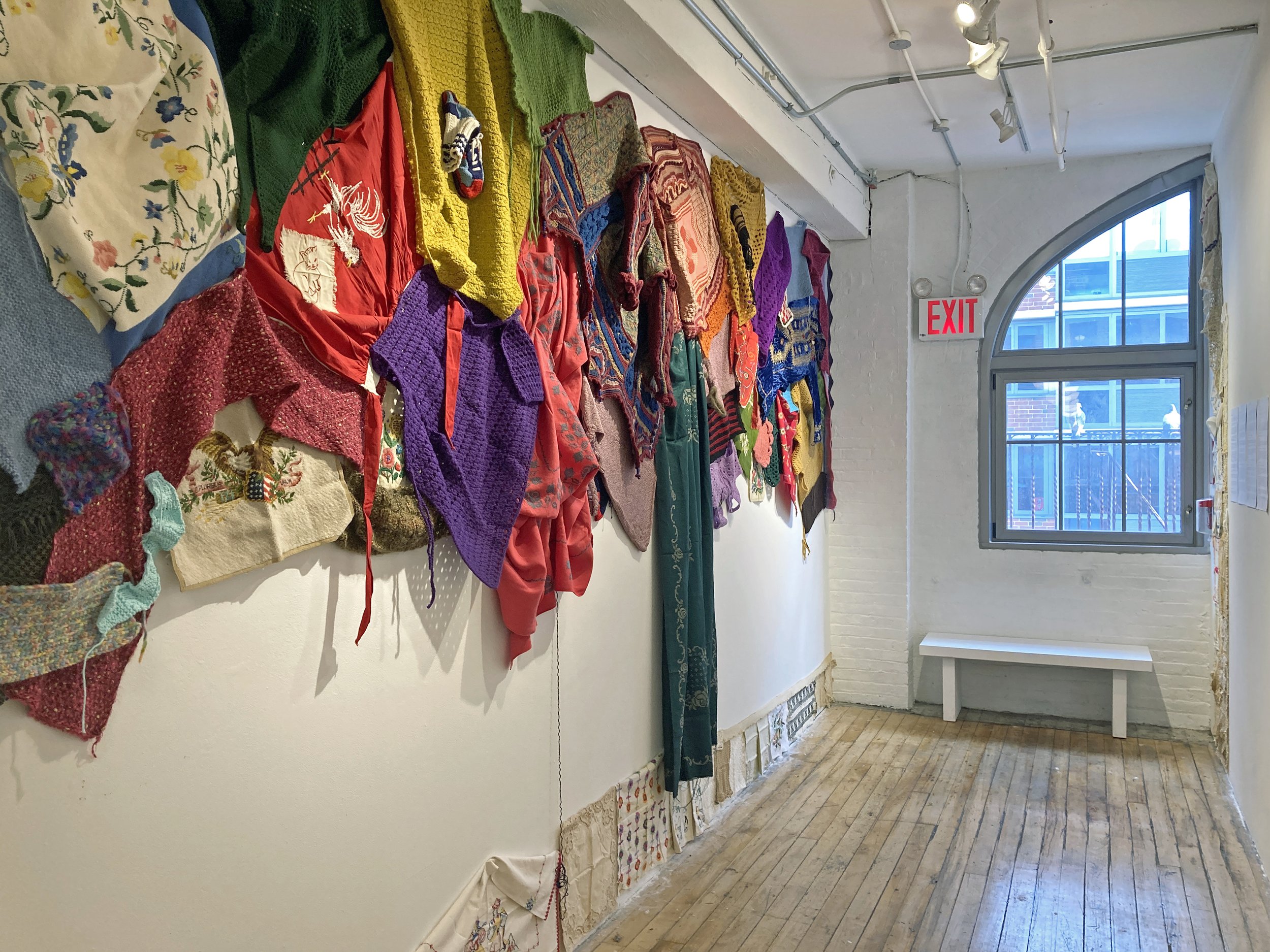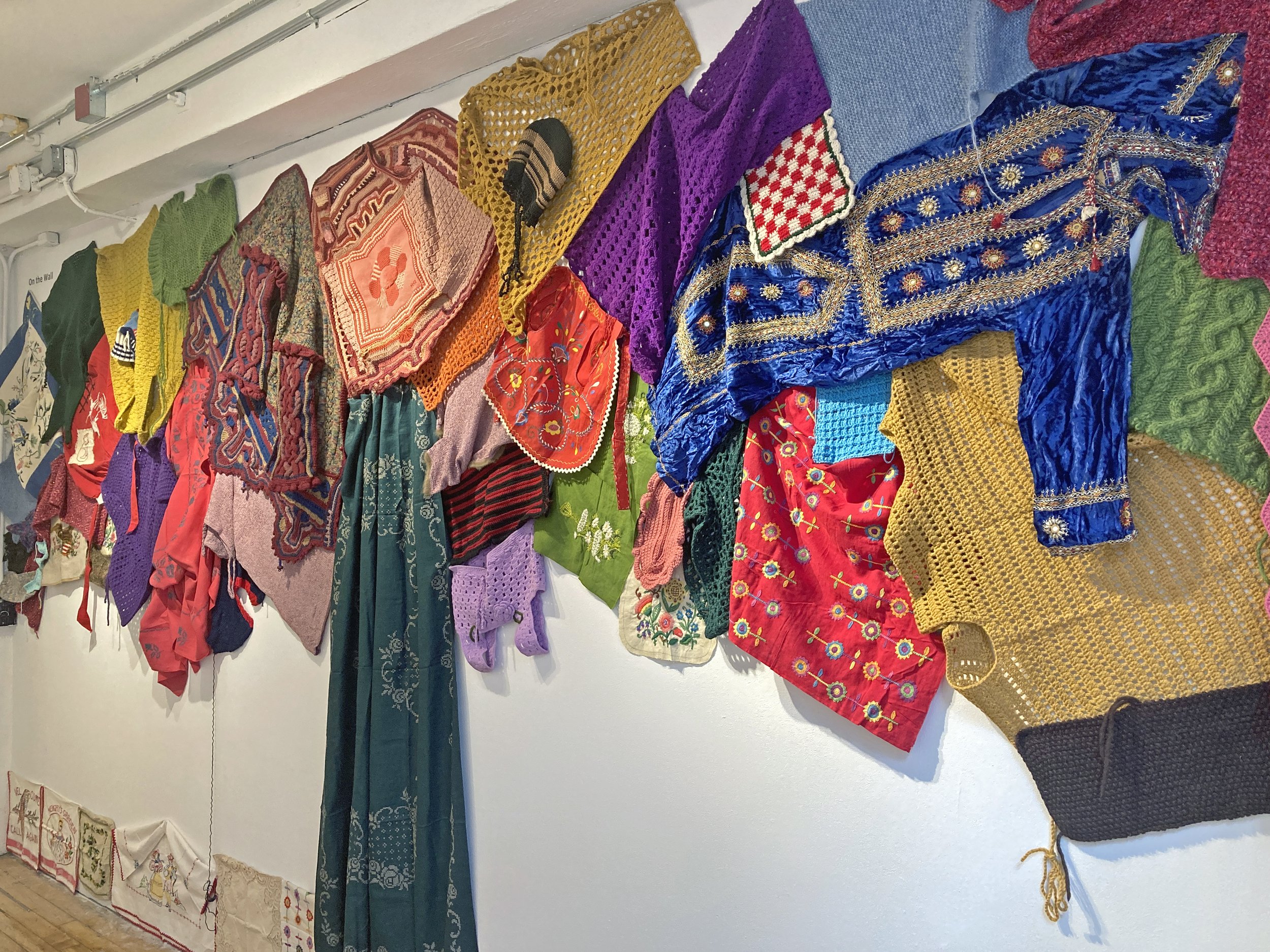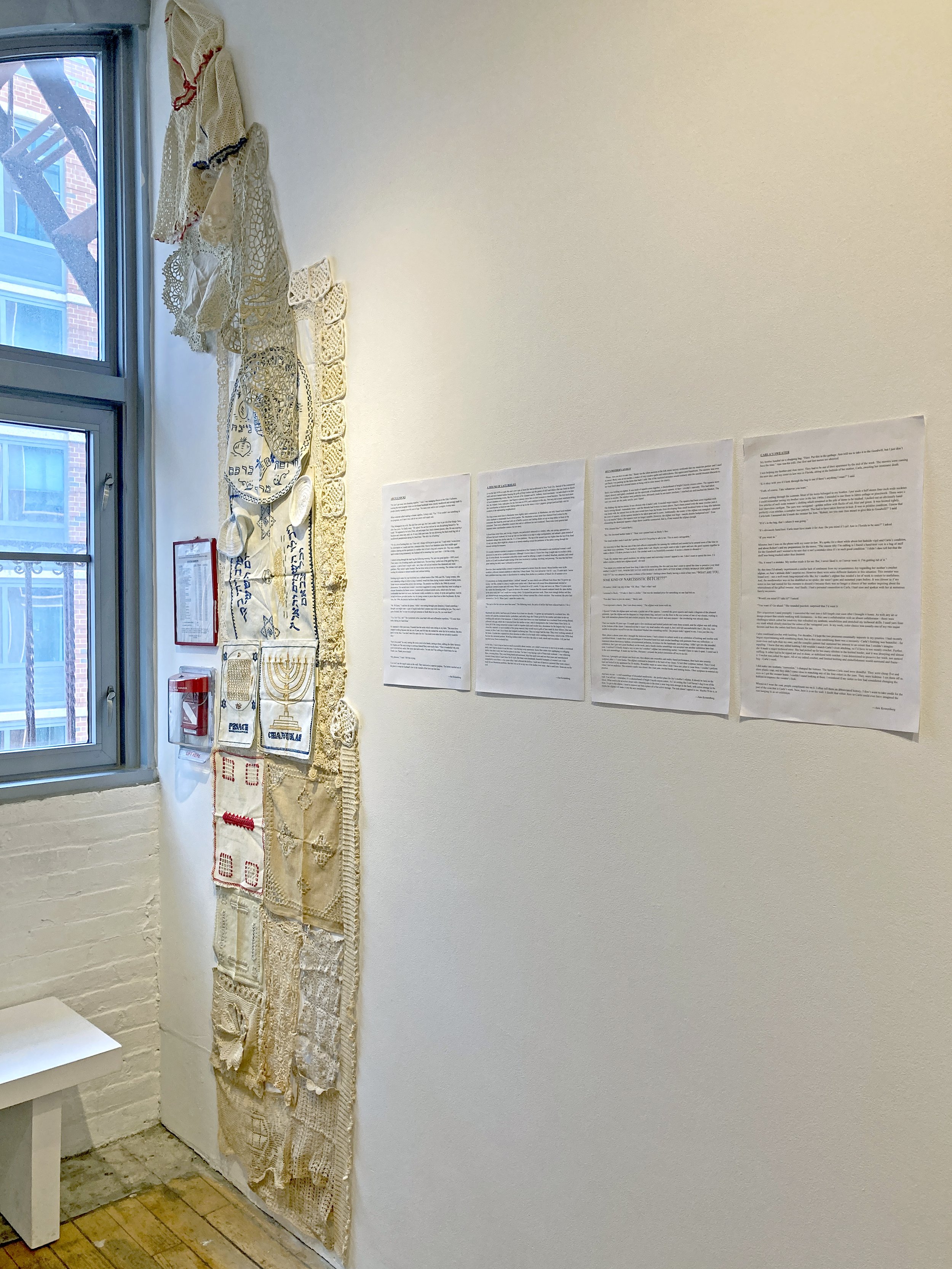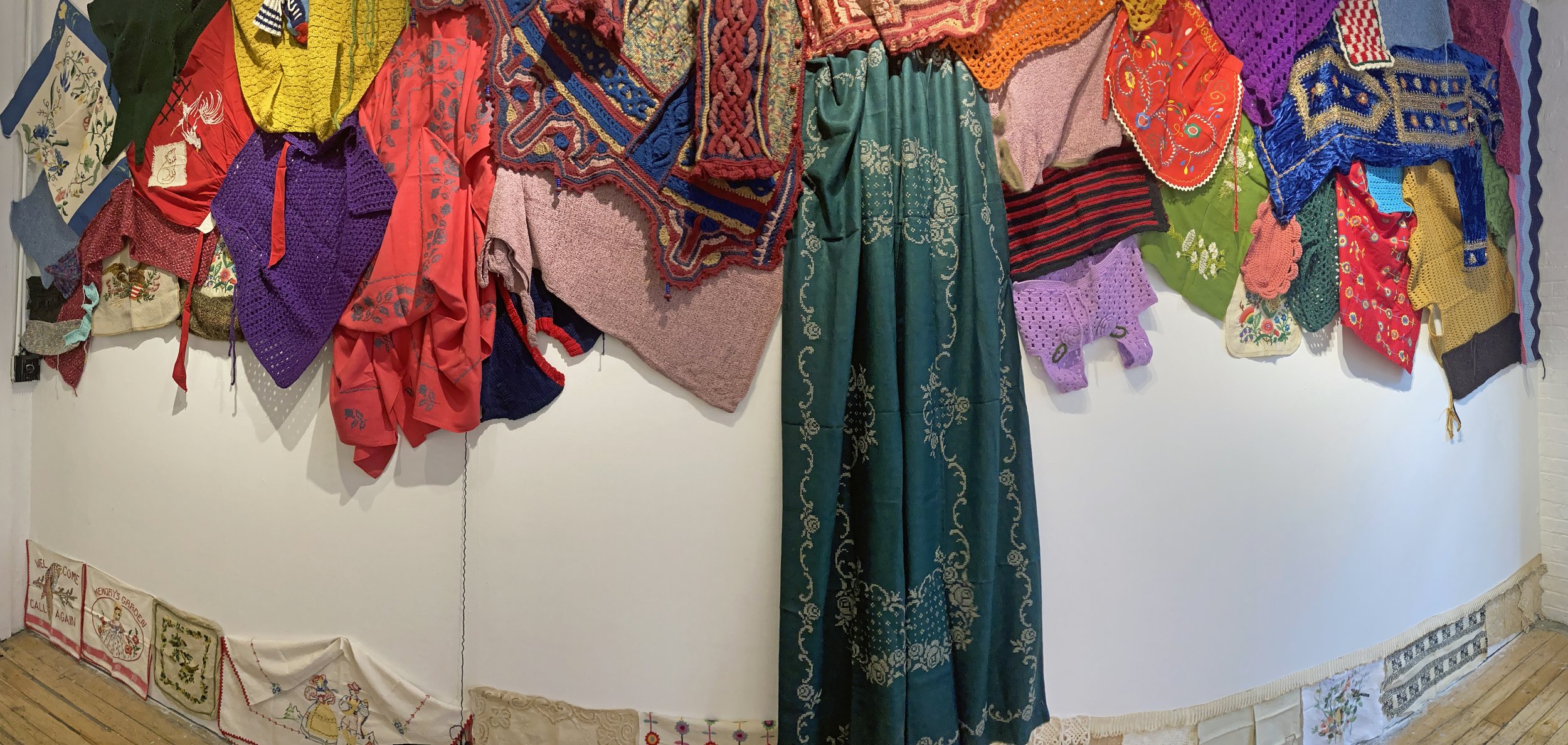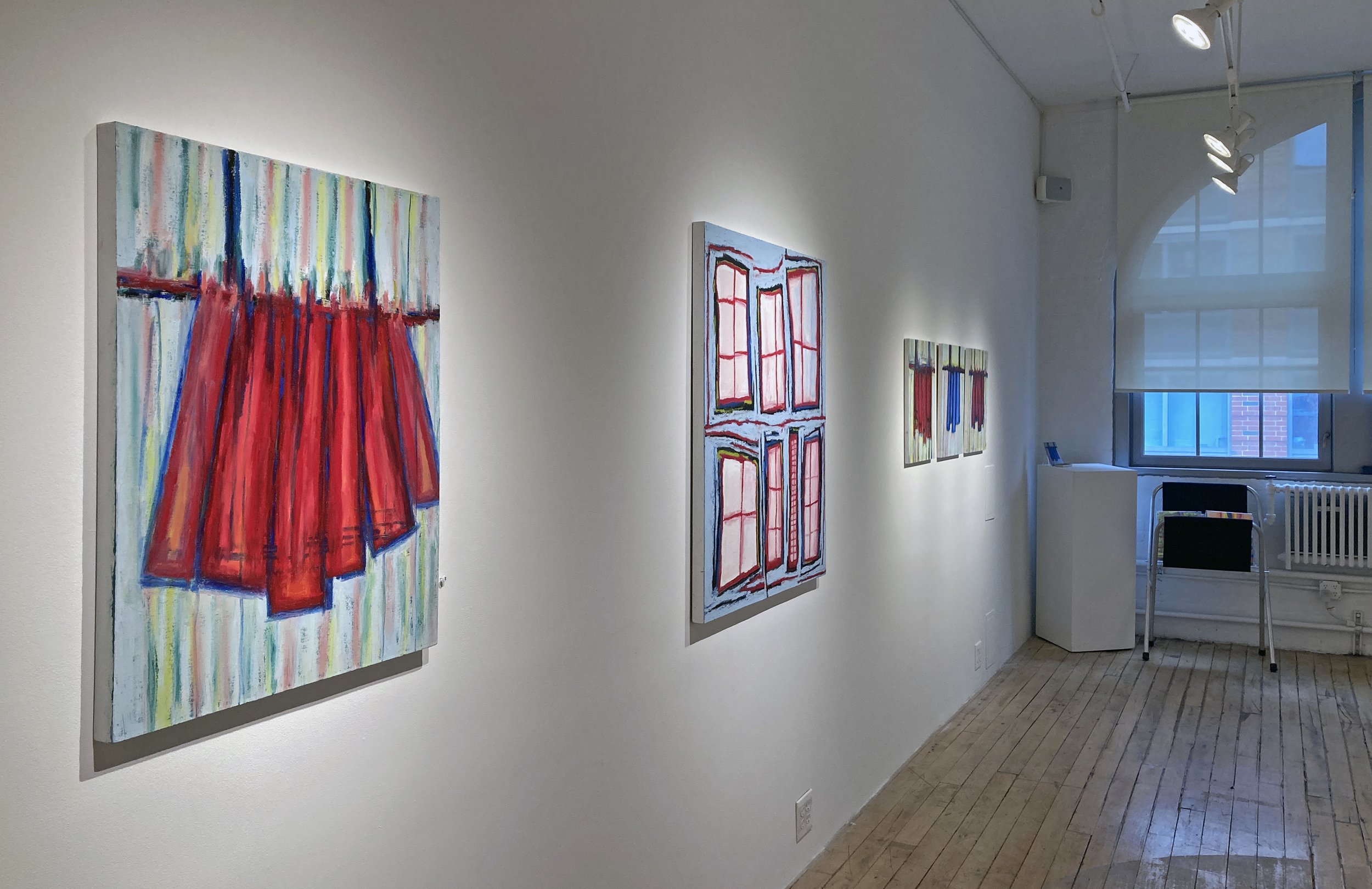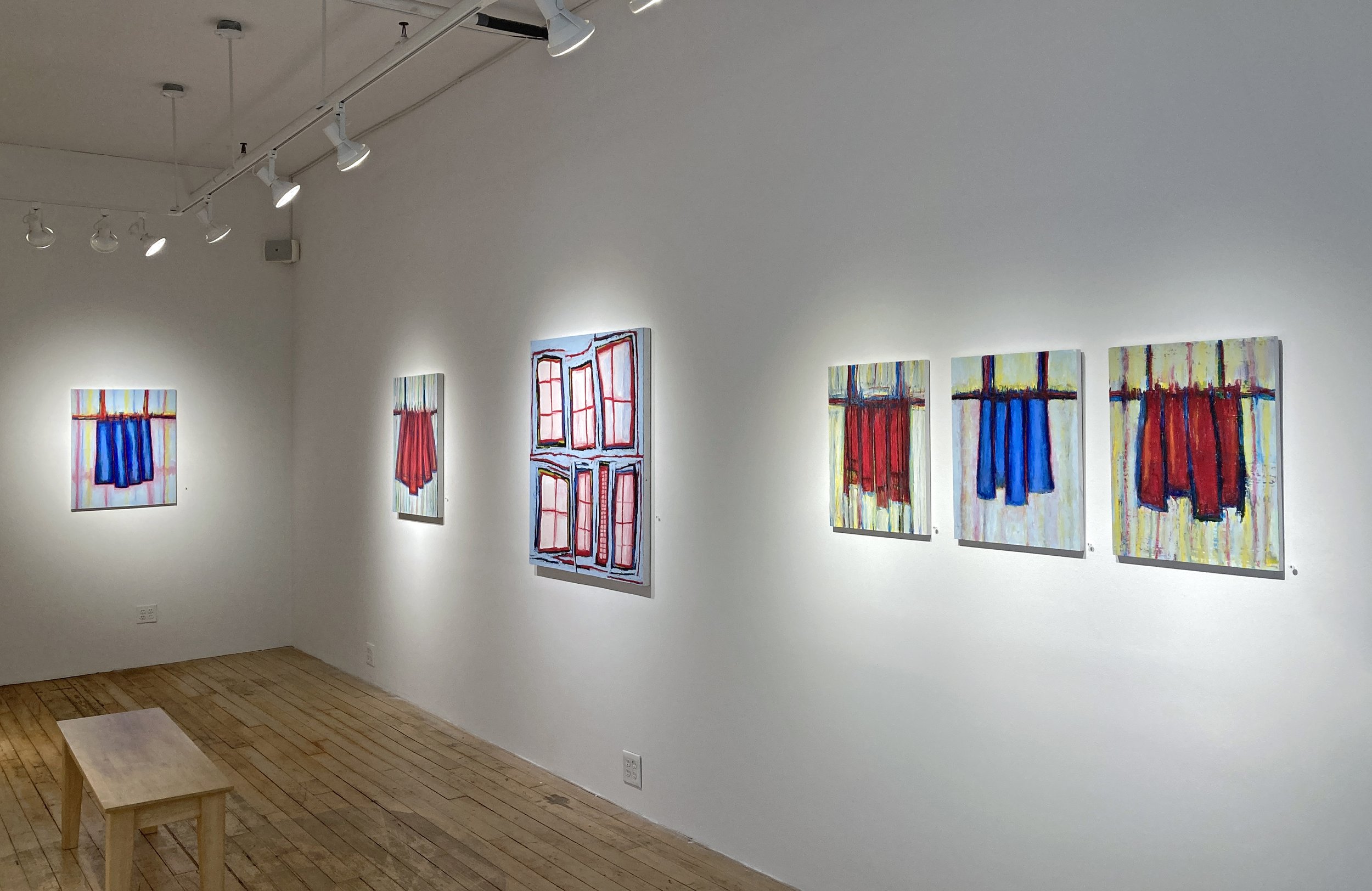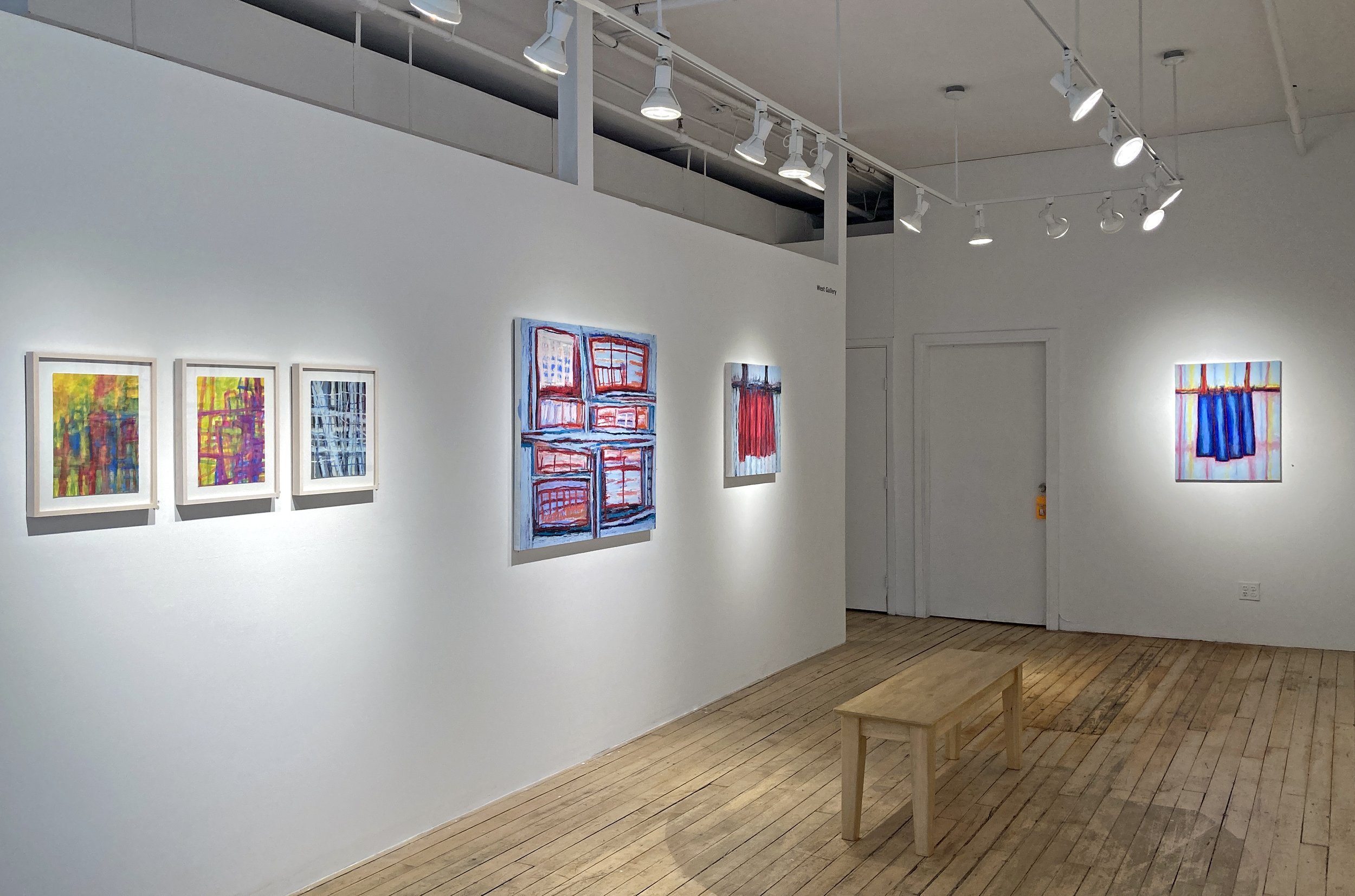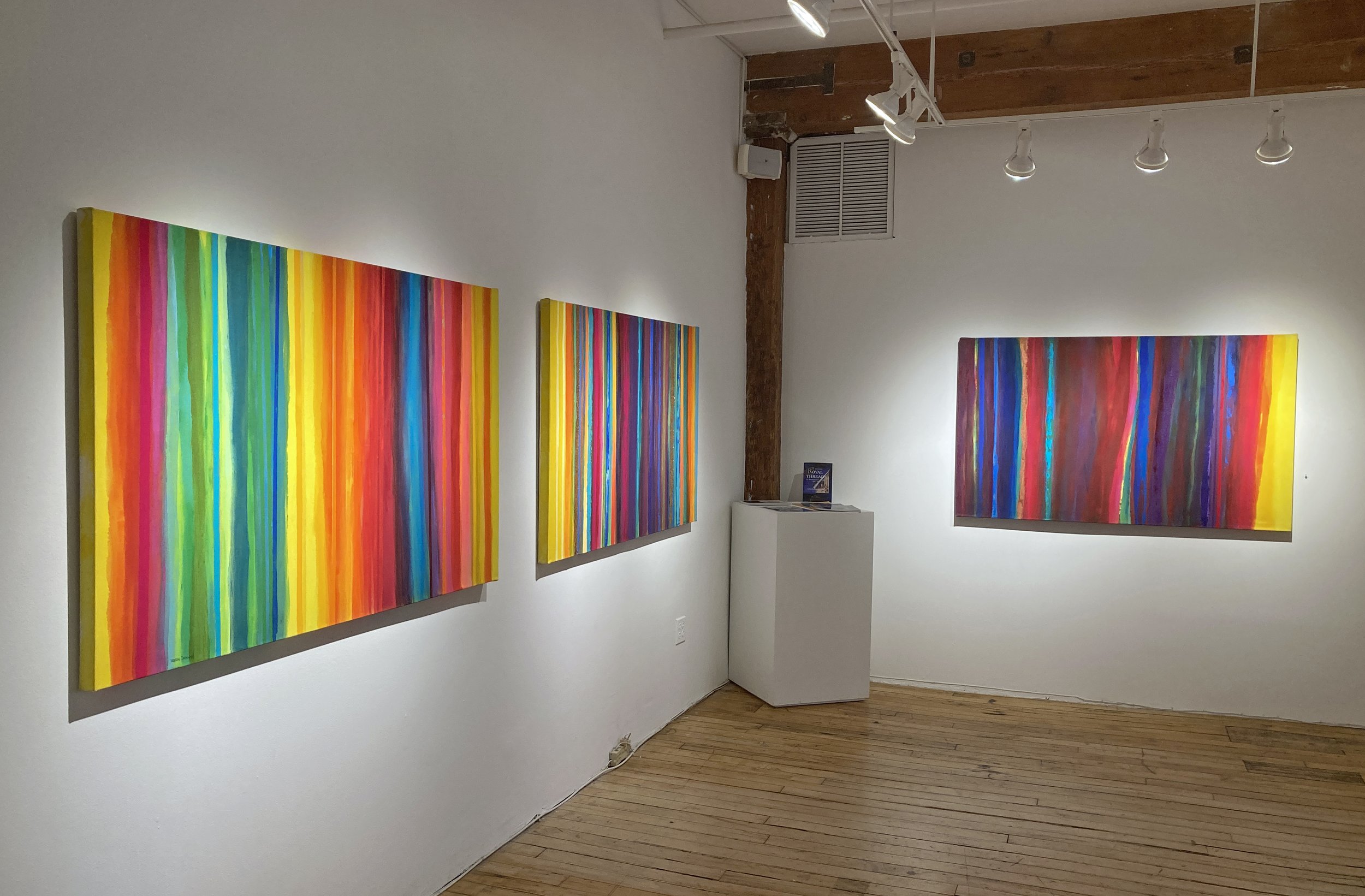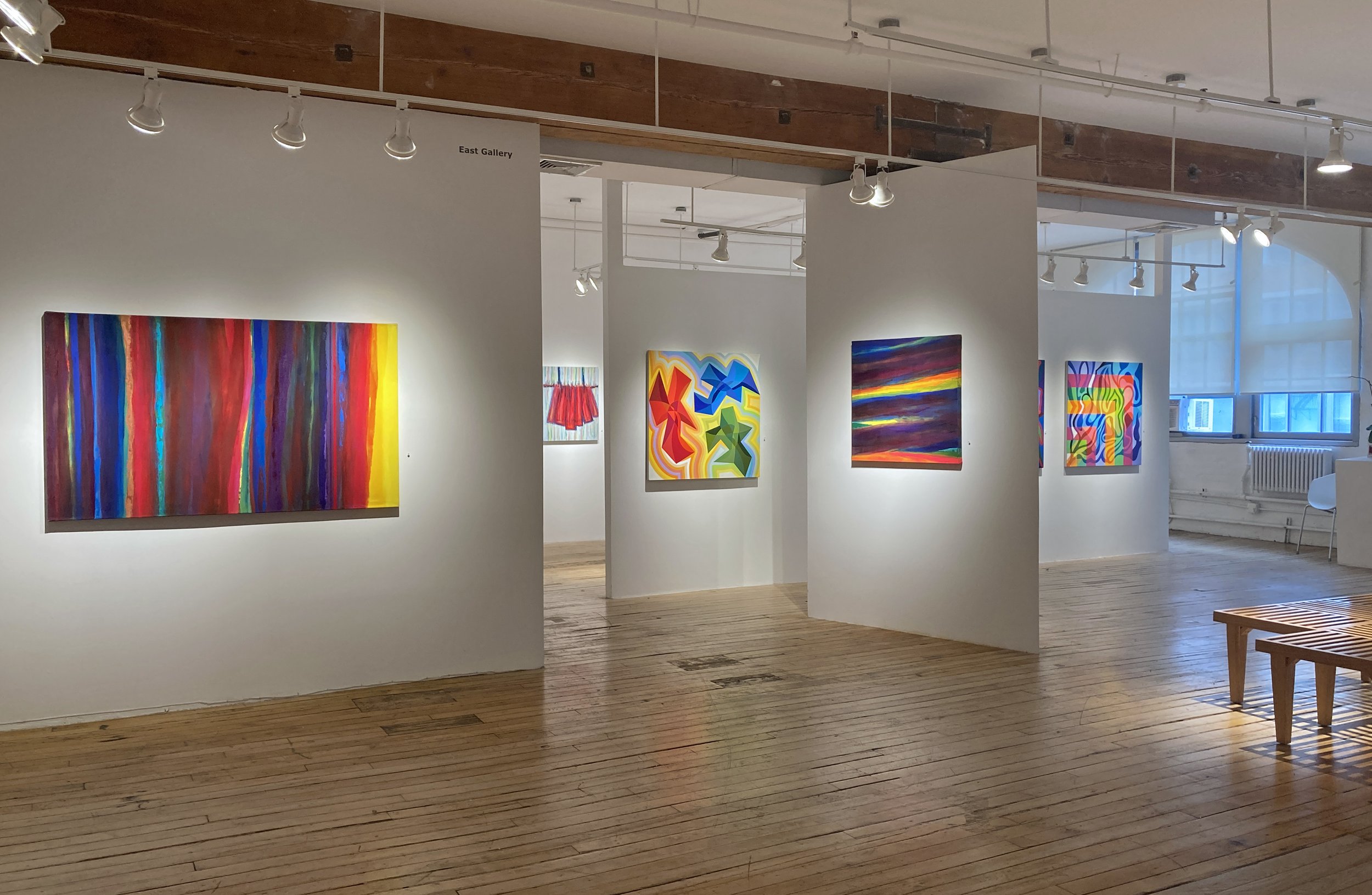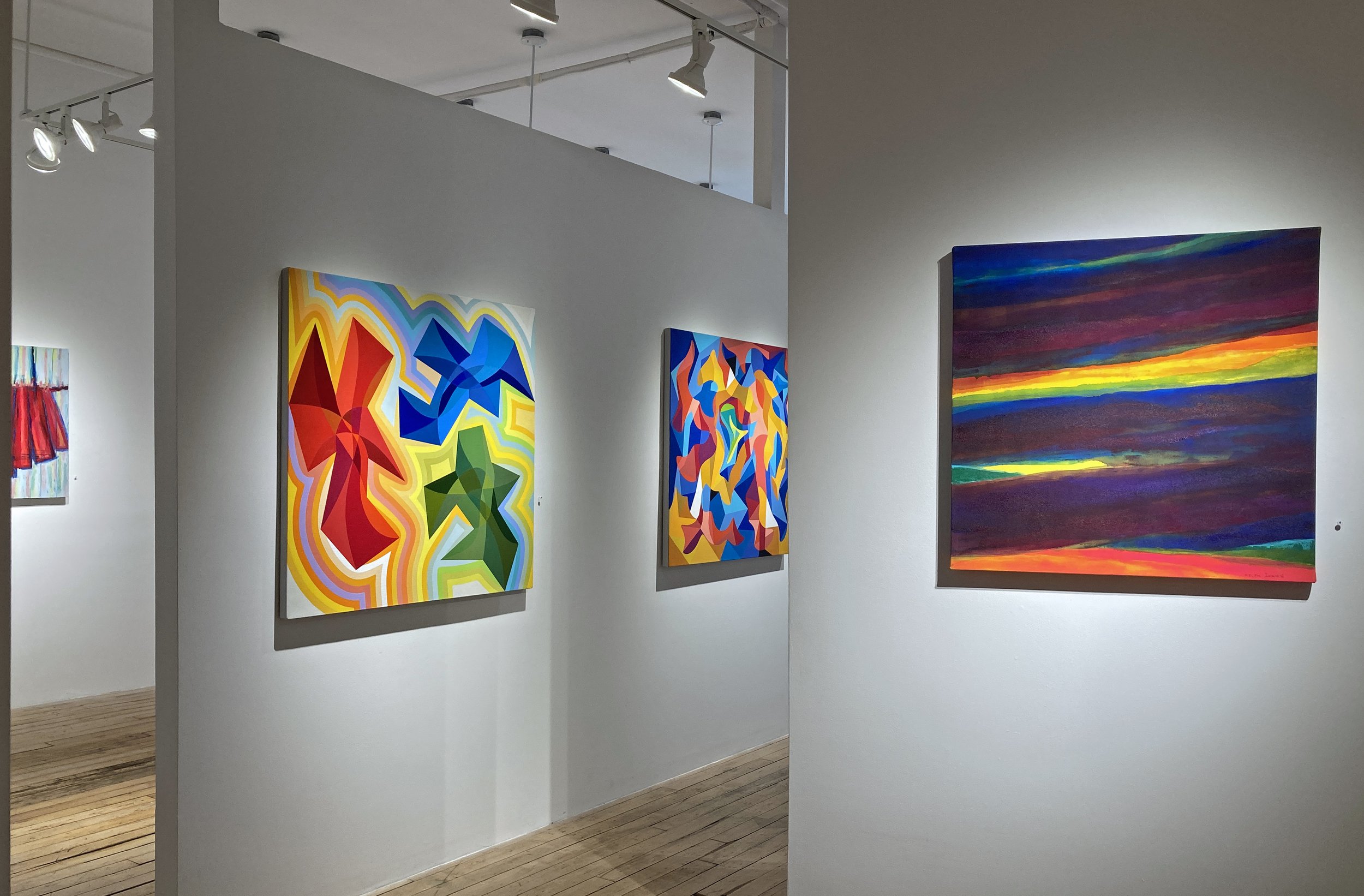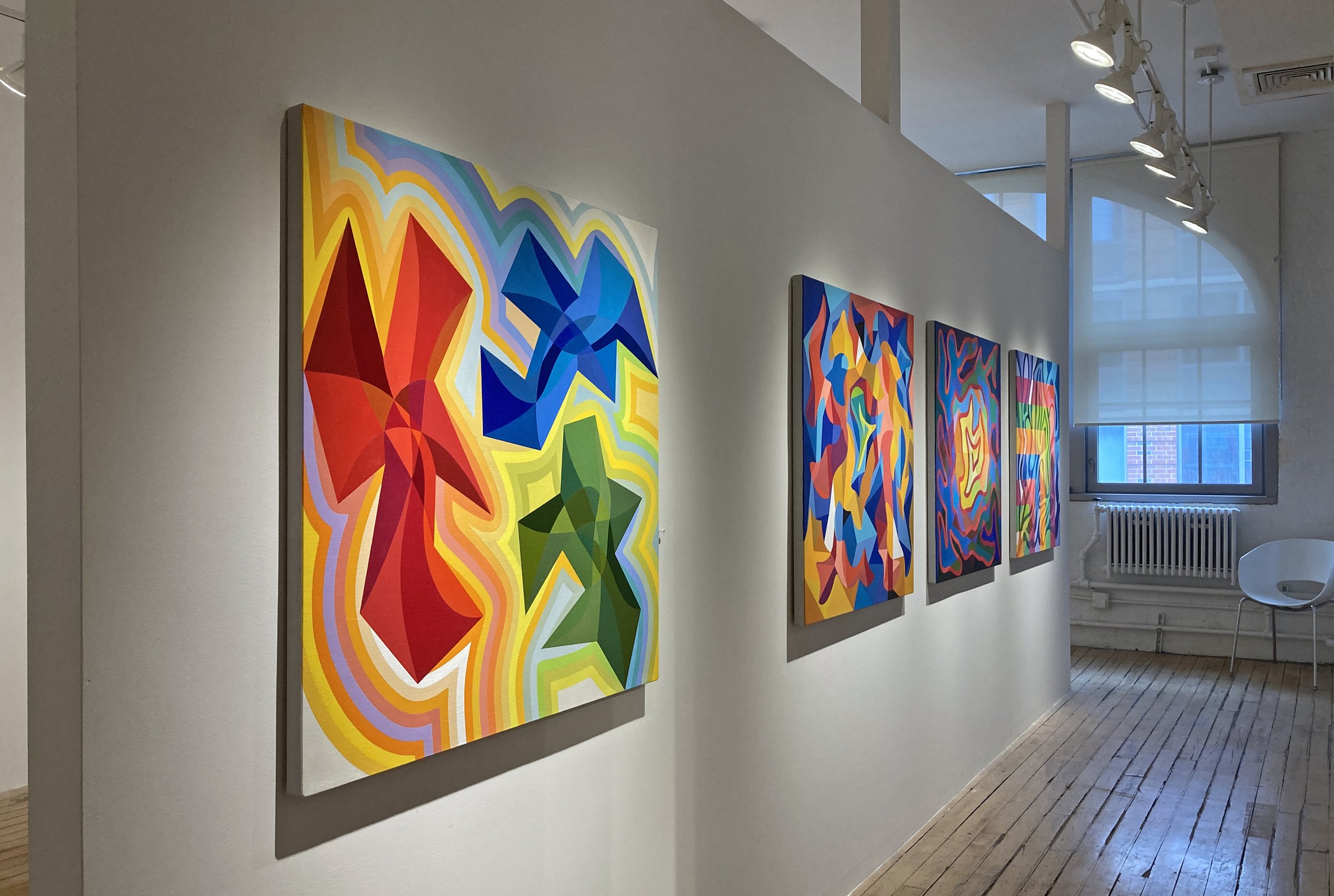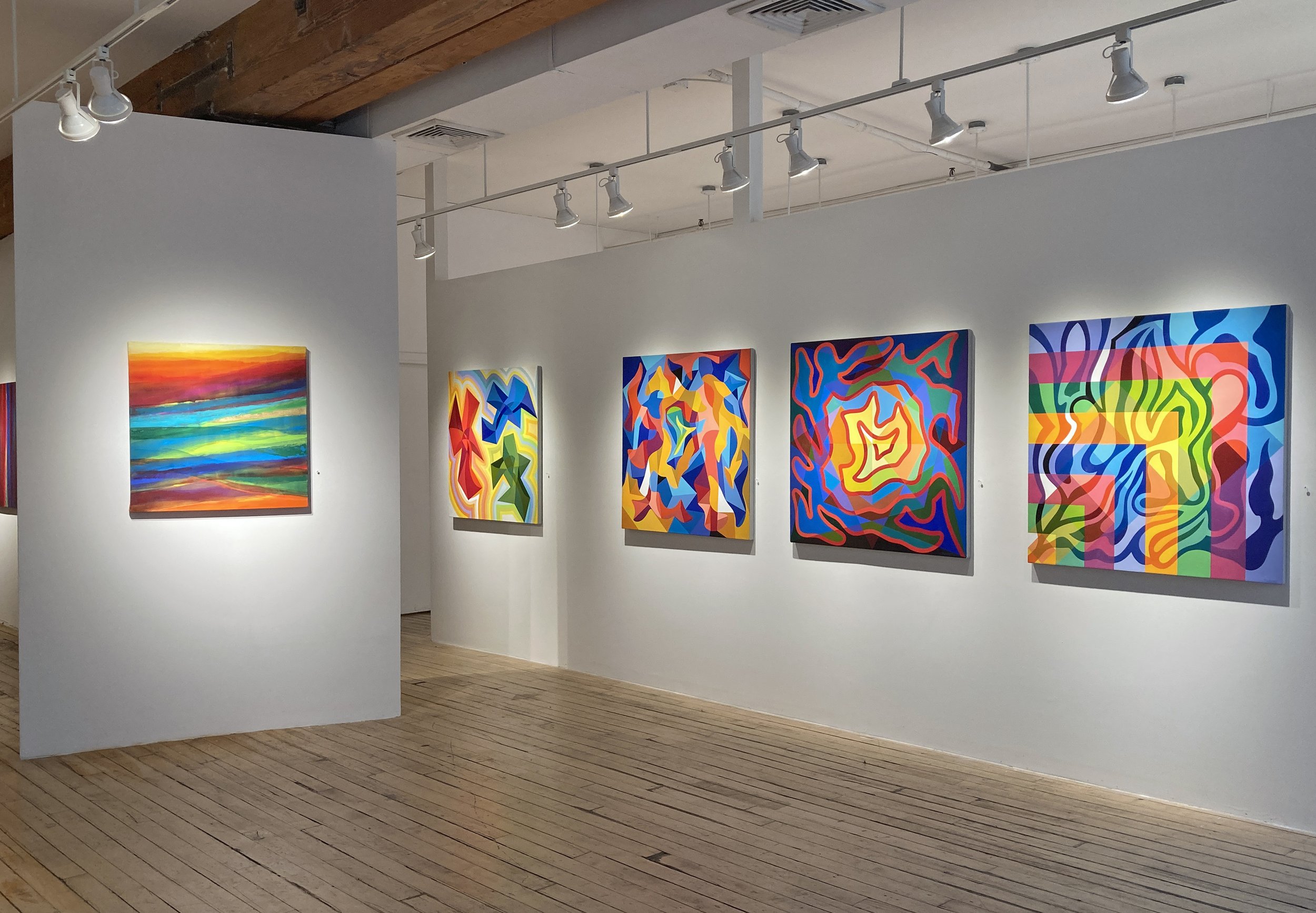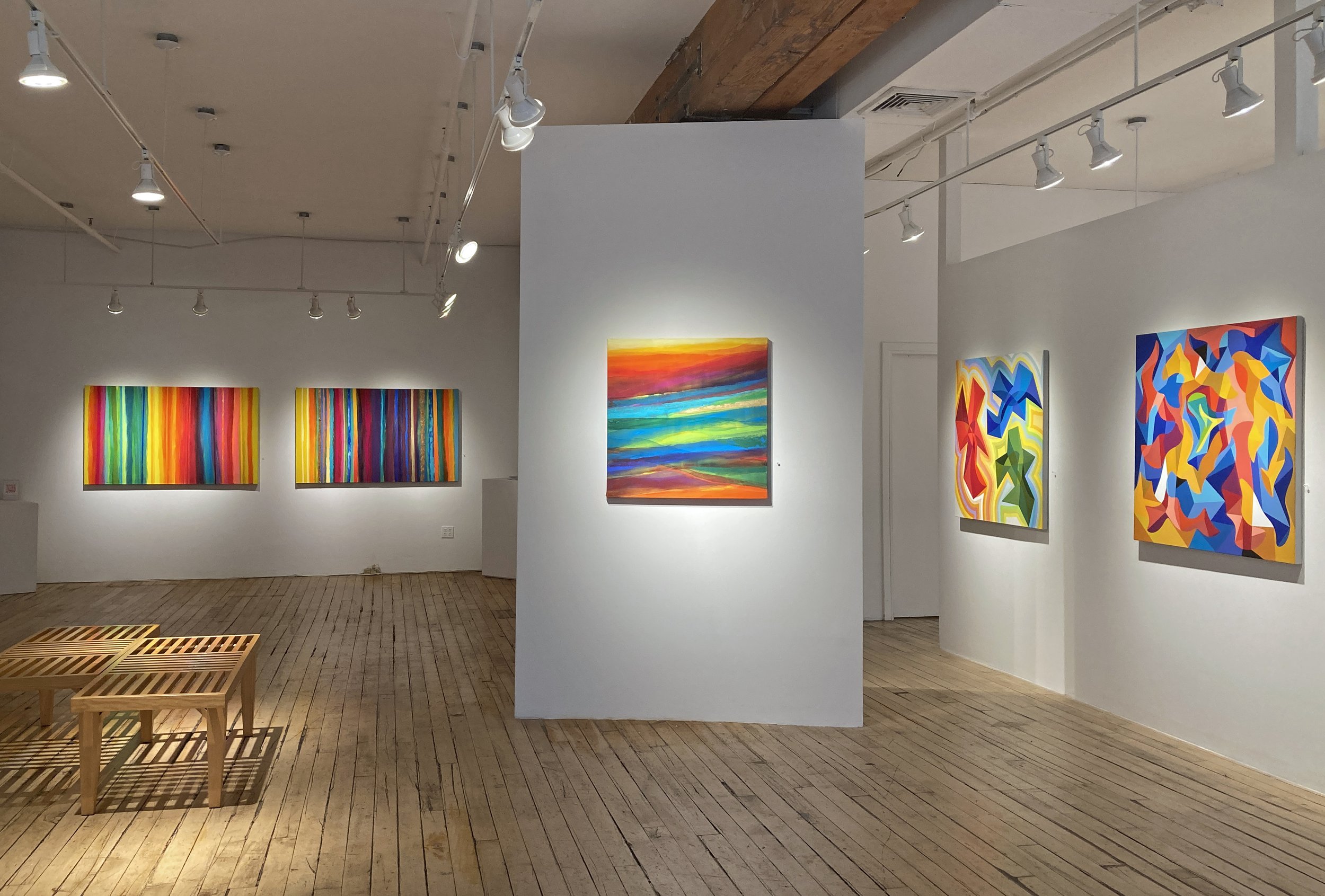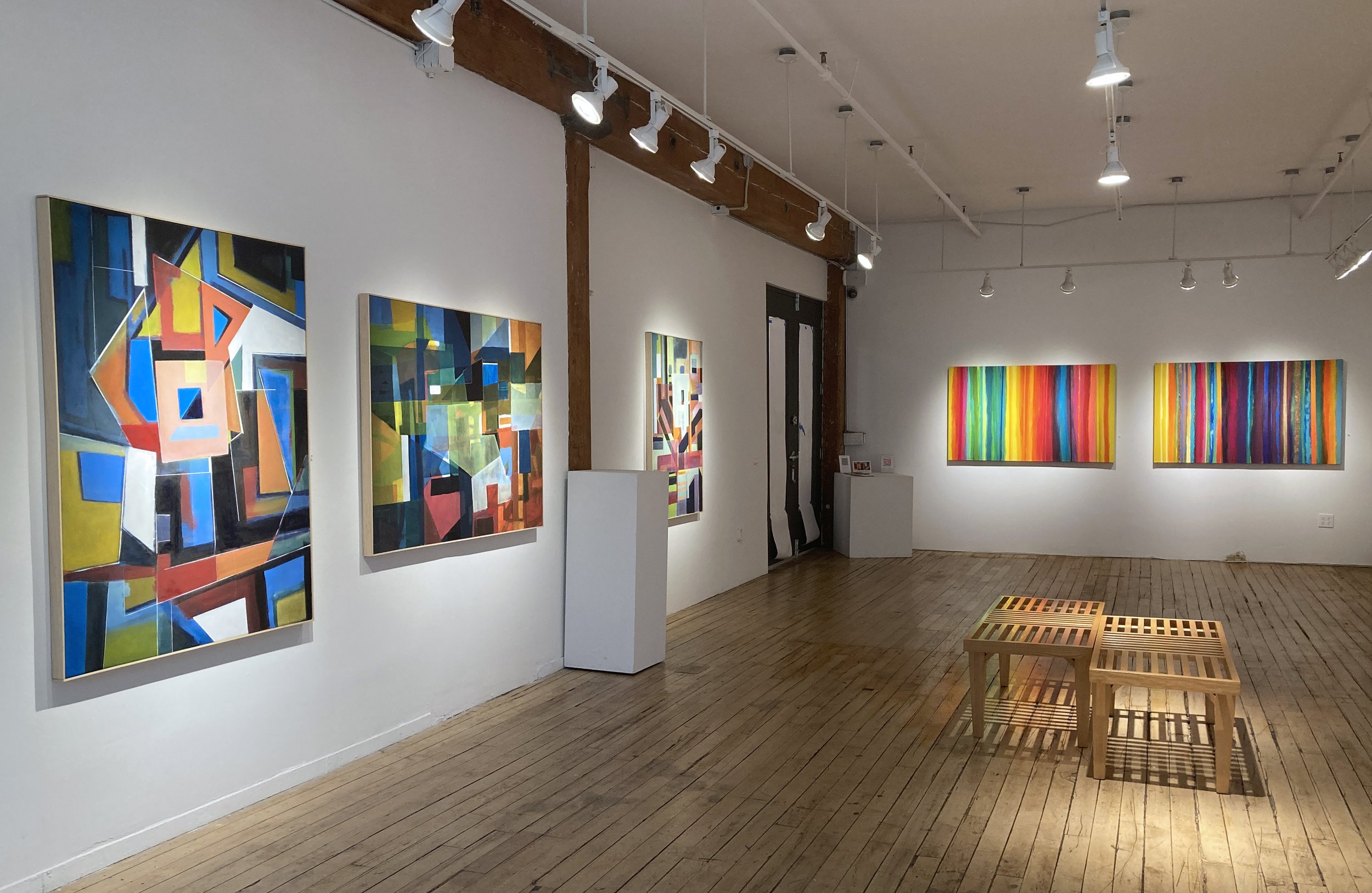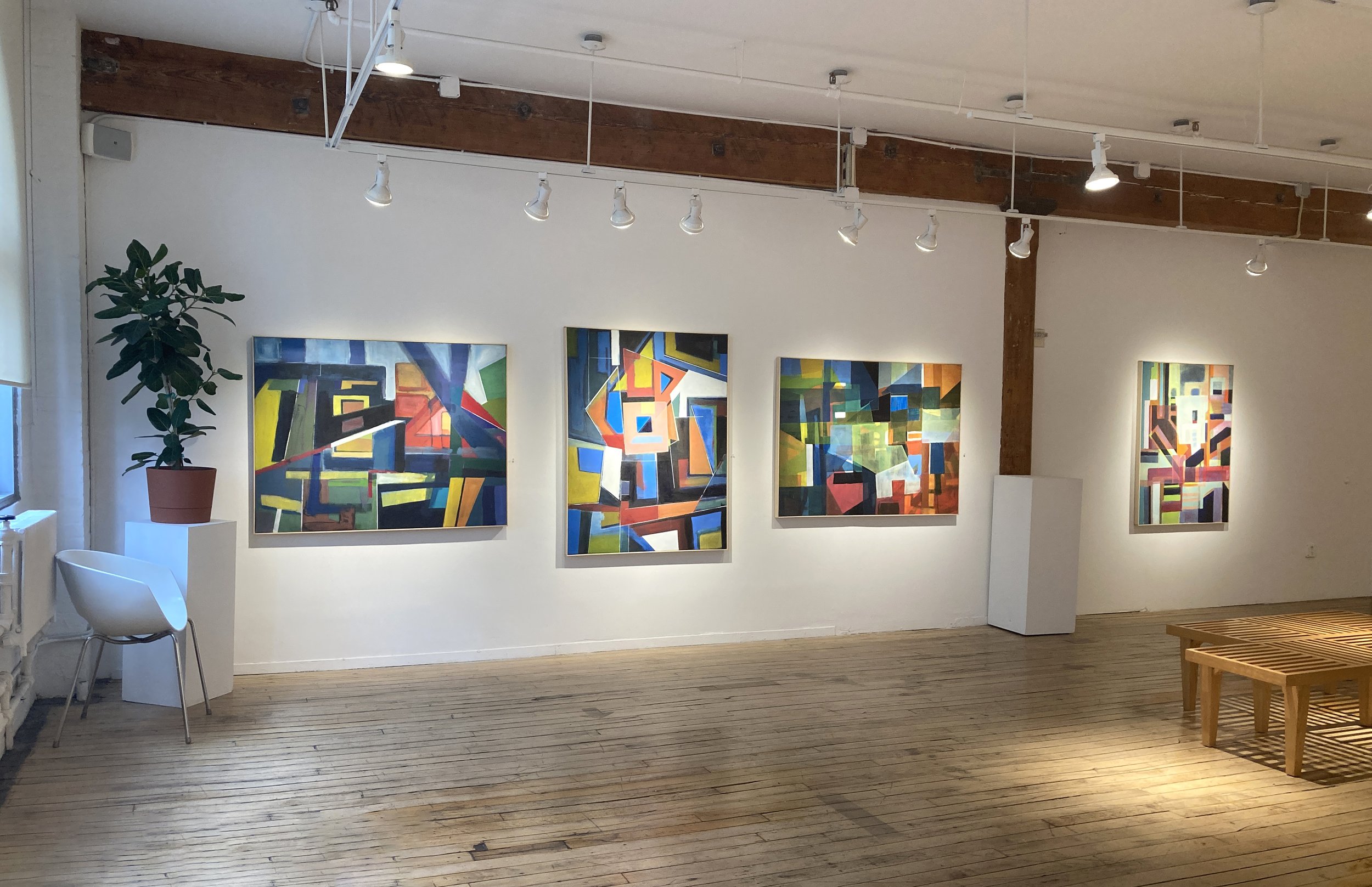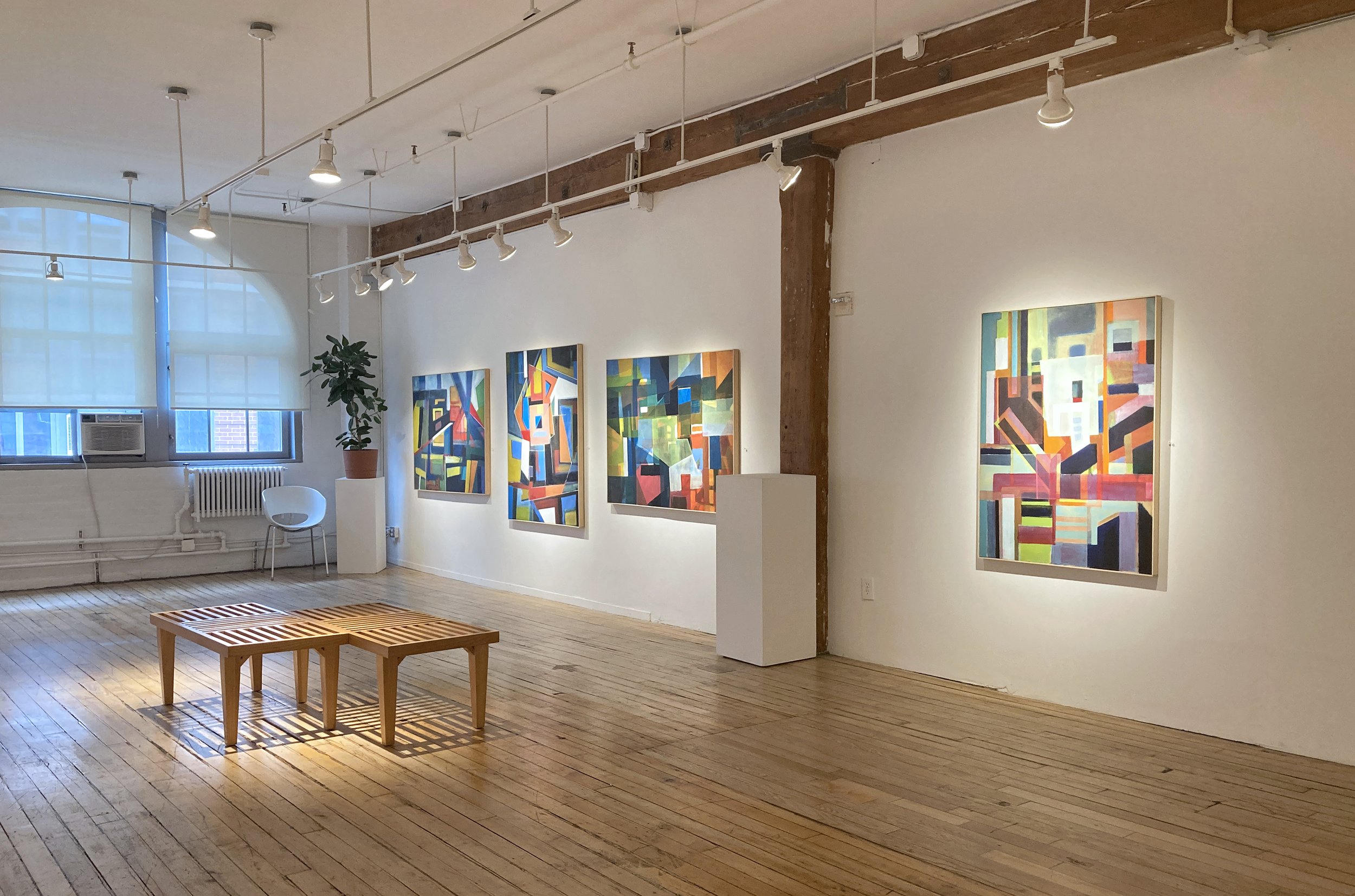May 23 - June 19, 2024
Chroma: Helen Iranyi, Robert Petrick, and Matthew Turov
Curtain Call: Darla Bjork
When This You See, Remember Me: Ann Kronenberg
Opening Reception: Thursday, May 23, 2024, 6 - 8pm
Carter Burden Gallery presents three new exhibitions: Chroma featuring the colorful paintings of Helen Iranyi, Robert Pertick, and Matthew Turov; Curtain Calls featuring textural and thought provoking paintings by Darla Bjork; and On the Wall featuring the installation When This You See, Remember Me by Ann Kronenberg. The reception will be on Thursday, May 23 from 6pm to 8pm. The exhibitions run from May 23 - June 19, 2024, at 548 West 28th Street in New York City. The gallery hours are Tuesday - Friday, 11 a.m. - 5 p.m., Saturday 11 a.m. - 6 p.m.
Exhibition List
Helen Iranyi
In Chroma, Helen Iranyi, a dedicated artist known for her vibrant abstract paintings, finds inspiration and excitement in the world of paint. Stepping into an art supply store fills her with exhilaration as she contemplates the array of materials at her disposal. While some artists may approach a blank canvas with trepidation, for Iranyi, it presents a thrilling challenge. Rather than beginning with considerations of composition or style, she starts with color, using it as the foundation upon which to build shapes, textures, and interactions within her work. Commenting on her "exploitation of sheer, luminous color," The New York Times reported, "Helen Iranyi... shows a distinct gift... She is at her strongest in pictures that adhere to brilliant colors with their brilliance unveiled by elaborate overlays of pigment." For Iranyi, color is the cornerstone of her artistry, and she aims to express light and form through the weaving and manipulation of these hues.
Helen Iranyi was born in 1937. As a teenager, she attended the School of the Museum of Fine Arts, Boston. She received a B.S. in Computer Science at the N.Y. Institute of Technology/SUNY (NY) in 1990. Highlights of Helen Iranyi's career include her participation in numerous solo and group exhibitions including Pittsburgh Corporations Collect at the Heinz Galleries at the Carnegie Institute. She has been represented by Kingpitcher Gallery (Pittsburgh, Pennsylvania), MJS International (Fort Worth, Texas), Gallery Reese Paley (New Jersey), West Broadway Gallery, Barney Weinger Gallery, and the Multi Media Arts Gallery, (New York City.). Her works are in numerous private and corporate collections. Iranyi is also a published author and you can read more about her publications on Amazon. Her artist files are included in the Smithsonian Institution Libraries Collection, Yale University Library collection, the Museum of Modern Art DADABASE, and in the Artist Files at the Solomon R. Guggenheim Museum Archives in New York. Her personal letters are included in Columbia University Library collection.
Robert Petrick
Robert Petrick's work is a testament to over 45 years of unwavering dedication to pushing the boundaries of painting. Through his masterful use of color and loosely formed shapes rooted in gestural geometry, Petrick crafts an energetic interplay of forms that blur the line between object and abstraction. In his ongoing series, "Innersections," featured in the exhibition Chroma, he captures the essence of struggle, the ceaseless movement, and the electrifying energy that courses through a city. Infusing translucent hues with dynamic shape, Petrick illuminates the myriad facets of urban life, both seen and unseen.
Robert W. Petrick, an American artist born in 1945, was mostly self-taught, though attended the Tyler School of Art in Pennsylvania on a high school scholarship. After moving to New York in 1983, he delved deeply into the ethos of the New York School of Conceptual Abstraction and avant-garde music. Petrick's work embodies the innovative spirit of the New York School, seeking the sublime while contributing significantly to the conceptual abstraction movement of the East Village underground. Drawing inspiration from predecessors such as Motherwell, Klein, and Rothko, Petrick's artistic process aligns more closely with the ethos of the 1950s than to their contemporaries from the 1980’s Neo-Geo and Neo-Expressionist scenes.
Matthew Turov
Matthew Turov presents bright and dynamic geometric acrylic paintings on linen in the exhibition Chroma. His artistic vision revolves around exploring the interaction between nature-based and system-based forms within a vibrant spectrum of colors. He delves into line, rhythm, hue, luminosity, and harmony, seeking a balance between emotion and perception, joy and logic, the intuitive and the analytical. A central theme in Turov's work is the continuity of line, serving as a foundation upon which shapes emerge as planes of color, intertwined with linear and curvilinear movement. His practice is marked by an enduring fascination with the contrast between the seemingly static forms of ancient Egyptian art and the perpetual dynamism depicted in Futurism. Lines and colors intertwine to create arrangements that perpetually interact, embodying both suspended motion and continuous motility. Turov states, “In love with colors and the virtually endless ways they relate to each other, I often liken color relationships to musical scales or filaments in constant motion. Music is a constant for me and I enjoy discovering new ways of transforming notes into colors.”
Matthew Turov, born in 1952 in Oceanside, NY, has lived in almost every borough of New York City since 1972. He discovered his passion for art in his late teens, nurtured by early exposure to museums, fostering a deep appreciation for ancient Egyptian art at the Met and the Brooklyn Museum, and modernism at the Guggenheim and MoMA. Turov honed his artistic skills at the Art Students League under mentors such as Robert Beverly Hale, Knox Martin, and Leonid Lerman, before earning a BA in studio art from Hunter College, where he focused on painting and color theory with Sanford Wurmfeld. His works have been showcased in various exhibitions, including at the Islip Art Museum, Blue Door Art Center, Williamsburg Art & Historical Center, and Gallery 18, among many others and can be found in numerous private and public collections.
Darla Bjork
In her first solo-exhibition with Carter Burden Gallery painter Darla Bjork explores themes of death and transition through a series of gestural paintings in Curtain Calls. At the age of 85, Bjork’s contemplation on mortality deepened. While she transitioned from her previous COVID Windows Series, she found herself drawn to painting a peculiar shape, which gradually transformed into curtains. The symbolism of the curtain intrigued her — was it reminiscent of the enigmatic emerald curtain in The Wizard of Oz, prompting curiosity about what lie on the other side? Or perhaps it resembled the curtains of a theatrical production, echoing Shakespeare's assertion that "All the world’s a stage..." Through this series, Bjork grapples with existential questions about what lies behind the veil. Is death a barrier, a threshold, or merely the beginning of a new act? These opaque shrouds symbolize the uncertainty of the future and the inability to foresee what comes next. Drawing inspiration from poems like Mary Oliver’s When Death Comes, which approaches death with inquisitiveness rather than despair, Bjork’s artistic journey reflects a profound inquiry into the unknown. Ultimately, Curtain Calls serves as an elegy, a poetic reflection on loss and the inevitability of death, inviting the viewer to join in pondering the mysteries of existence and the passage beyond.
Darla Bjork was born and raised in rural Minnesota and moved to New York City after finishing medical school in 1965. She channeled her creative energy into her career as a psychiatrist, tapping into the depth of appreciation and understanding for the human psyche. After some early explorations in stone sculpture, she turned her attention to painting in 1977. She’s been making paintings ever since. Darla has had solo exhibitions in the United States and Europe. Ever cognizant of the historical role and efforts of women artists generally, Darla became a founding member of the women run nonprofit collective, Ceres Gallery, in downtown Manhattan. In 1996 she left to join SOHO20 Gallery, where she is a board member and gallery artist. Her work has been reviewed in The Woodstock Times, Kouvolan Sanomat (Finland), Women Artists’ News, and The Village Voice. She co-authored an essay published in Entering the Picture: Judy Chicago, The Fresno Feminist Art Program, and the Collective Visions of Women Artists, edited by Jill Fields, Routledge.
When This You See, Remember Me: Ann Kronenberg
When I am dead and in my grave
And all my bones are rotten
When this you see, remember me
That I am not forgotten.
In a captivating homage to the enduring legacy of needlework, artist Ann Kronenberg unveils her installation, reimagining discarded textiles as components of a monumental fabric assemblage. When This You See, Remember Me serves as an exploration of craftsmanship, memory, and preservation. Drawing inspiration from the poignant 18th and 19th-century poem above, which was embellished onto embroidered textiles, Kronenberg delves into the notion that the artistry of needlework often outlasts the needleworkers themselves. In an era dominated by machine-manufactured textiles and shifting societal norms, Kronenberg's work offers a compelling reflection on the evolving role of handcrafted textiles. Over the span of five decades, Kronenberg meticulously collected a diverse array of handcrafted items and fragments. These treasures, sourced from used textile dealers, thrift shops, and personal connections, weave together a narrative of craftsmanship and tradition. Each piece carries with it a story—a testament to the dedication and skill of its creator. Through her installation, Kronenberg breathes new life into these relics, inviting viewers to contemplate the intricate beauty of needlework and the stories embedded within each stitch. Kronenberg states, “The installation is completed by written accounts of the histories of selected needlework components—an effort to remember and honor my needlework collaborators, both the known and the anonymous.”
Ann Kronenberg is a versatile artist and writer whose creative endeavors span a wide array of mediums, including sculptural objects, installations, book works, works on paper, handmade paper works, wearables, and performance art. Beyond her visual creations, Kronenberg also delves into literature, crafting memoirs and texts for her book works, adding depth and narrative to her artistic expressions. Her work has been exhibited in galleries and exhibition spaces in New York City and across the nation. With a rich background in education, Kronenberg has shared her passion for art with students of all ages, teaching adult education courses, children and adolescents, and facilitating continuing professional education. Her extensive experience extends beyond the classroom, encompassing roles in arts and non-profit administration, editorial work for artists' newsletters, published art criticism, clothing design for retail markets, and costume design for performances. Additionally, her illustrations have been featured in national magazines, showcasing her multifaceted talents. She studied art and art history extensively, earning her MFA in sculpture from Hunter College. However, her academic journey began with her undergraduate major in biological sciences, receiving an AB from Cornell University, and continued with years of teaching science and working in laboratories. This unique background infuses her art with a distinctive perspective, as her scientific training informs both her subject matter and analytical approach to artistic creation.
When This You See, Remember Me is on view from April 18 - July 24, 2024.
